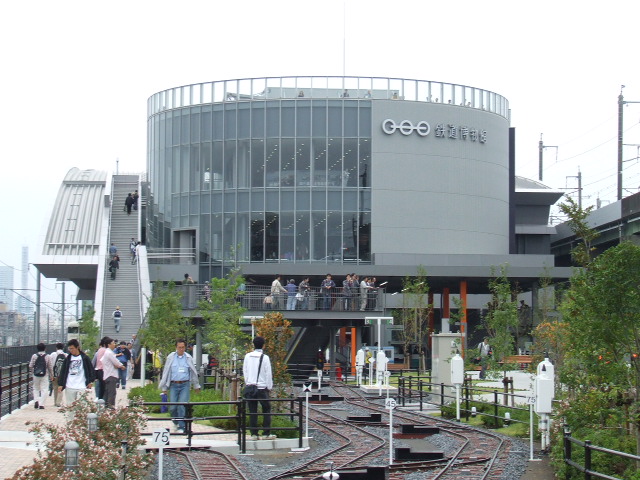Type TR 73 3-axle bogie used for
superior
passenger carriages such as first class observation cars, first class
sleeping cars and dining cars.
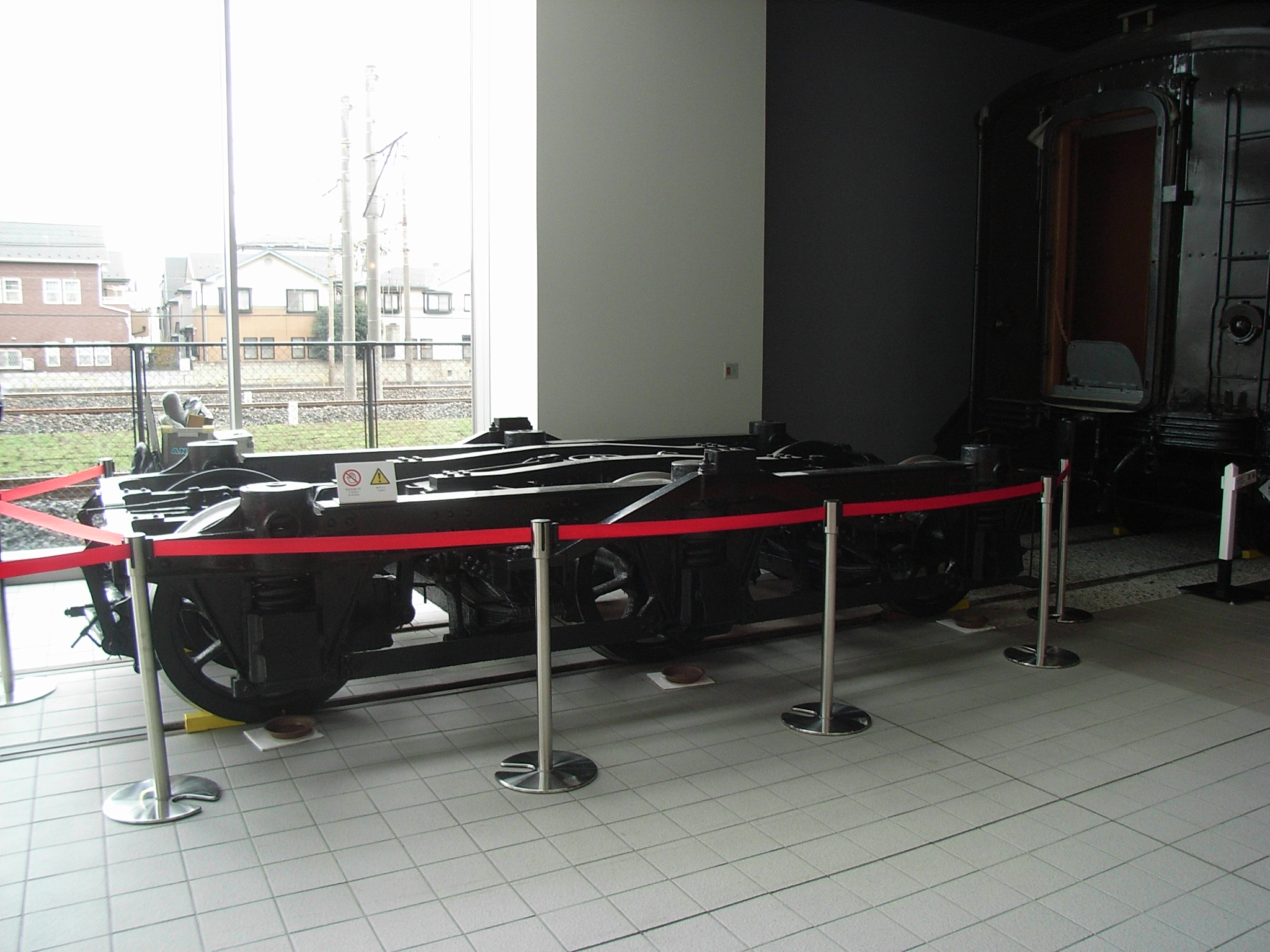
|
The first-class observation car Maite
39 shows
its corridor connecting end. This carriage was the most luxurious
passenger
car before the war being operated at the end of the supreme limited
express
train 'Fuji' between Tokyo and Shimonoseki.
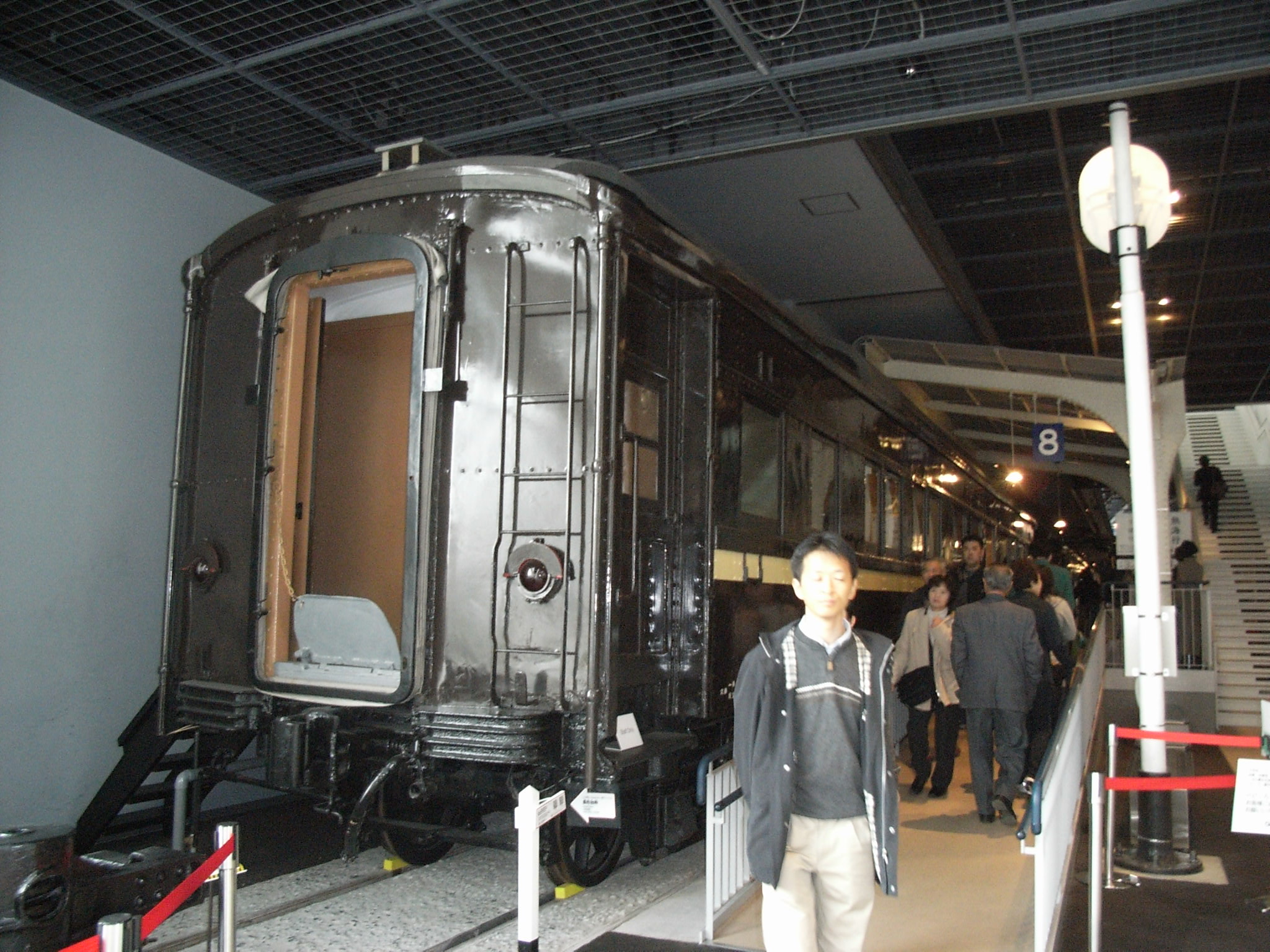
|
Reproduced to the
right of Maite 39 is a destination board for the limited express 'Fuji'.
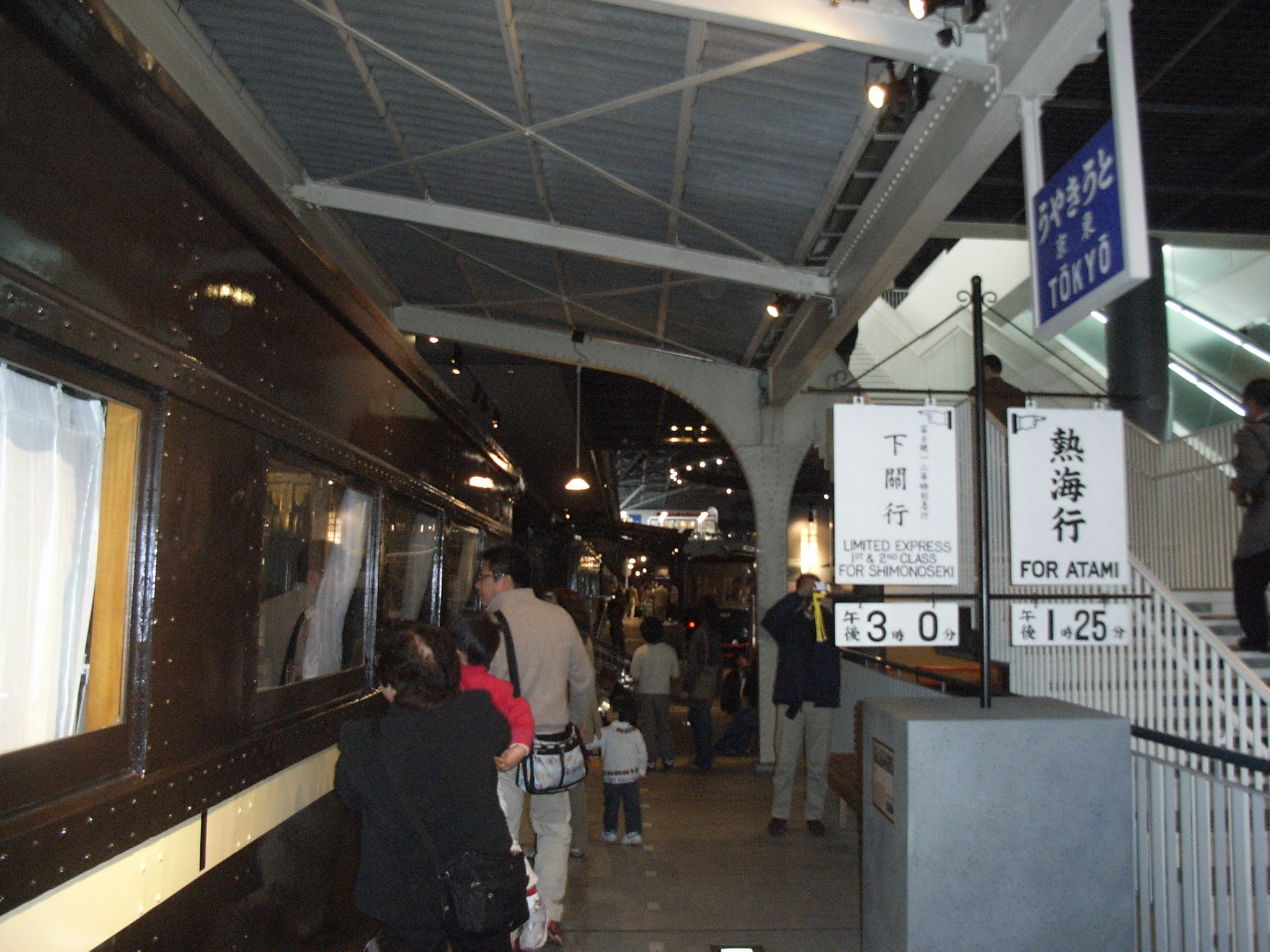
|
|
Miniaturised Nagano Shinkansen E2 set serves as a shuttle
train
between the Museum Centre and Museum North.
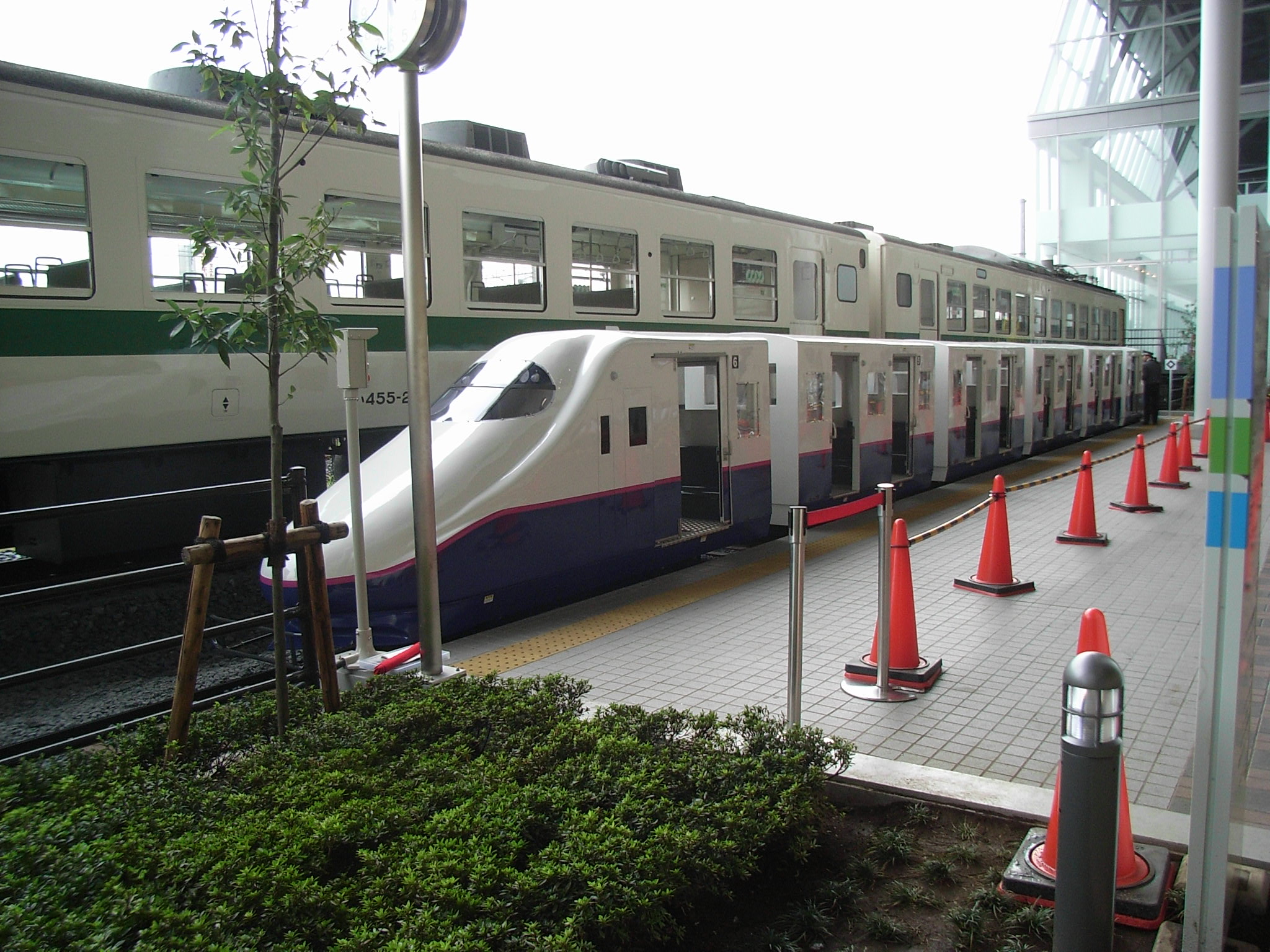
|
An attraction of miniature trains. Guests can operate trains
under
automatic collision avoidance by means of signaling and automatic train
stop
systems that work in a similar way to the actual railways'.
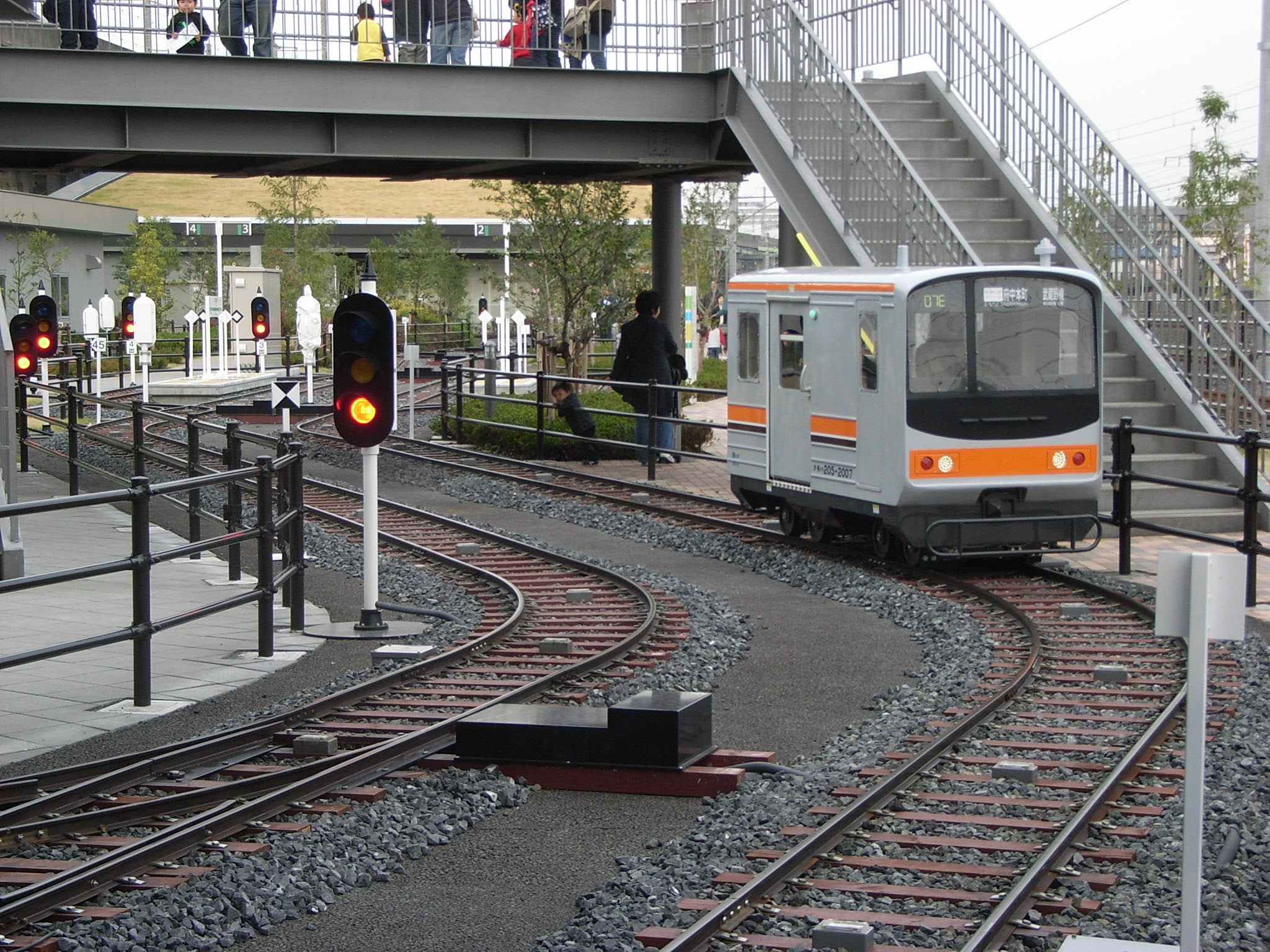
|
The mock E253
Narita
Express set takes a sharp curve following GO signals.
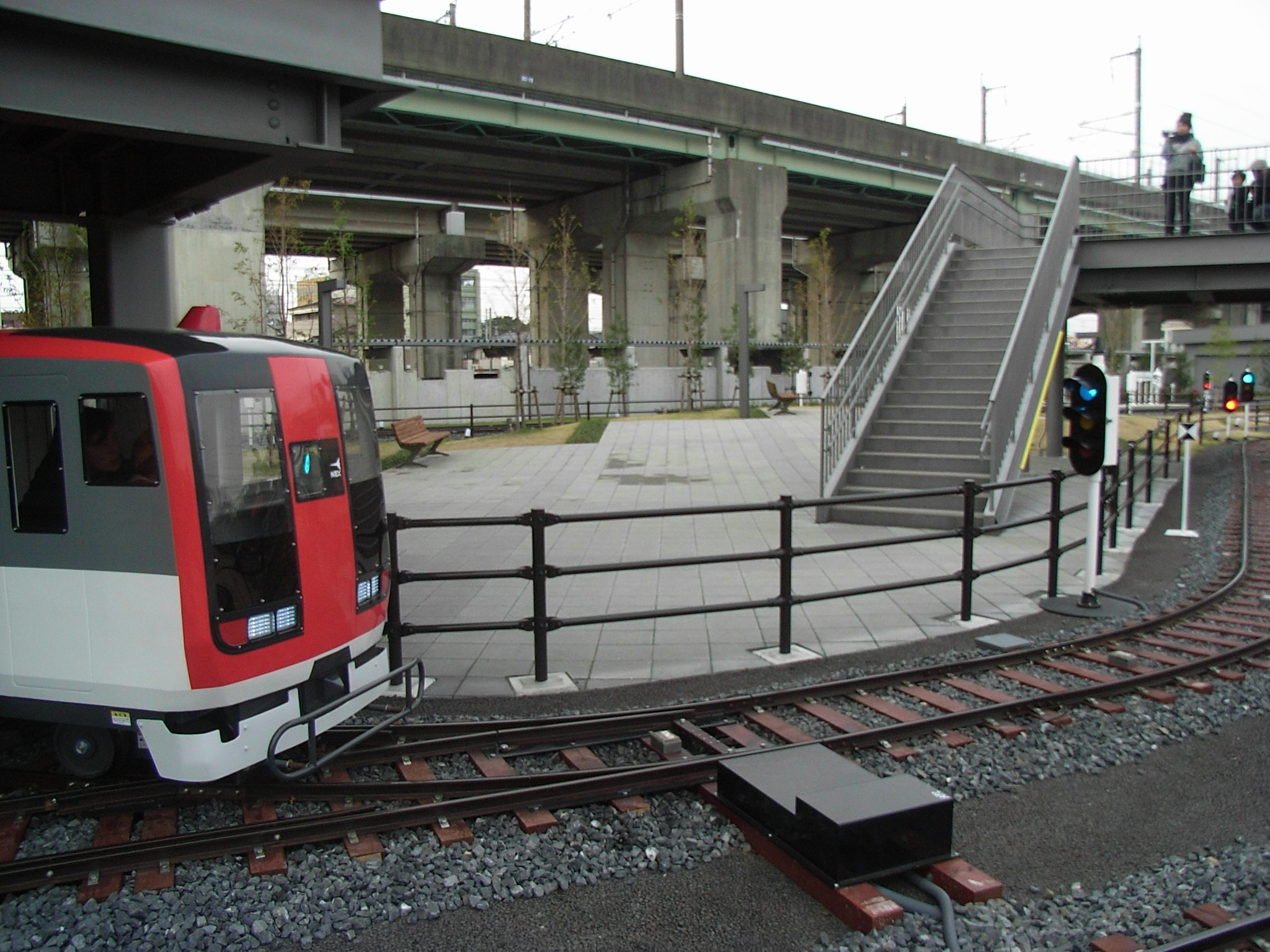
|
|
The rear end of the mock E253 Narira Express car.
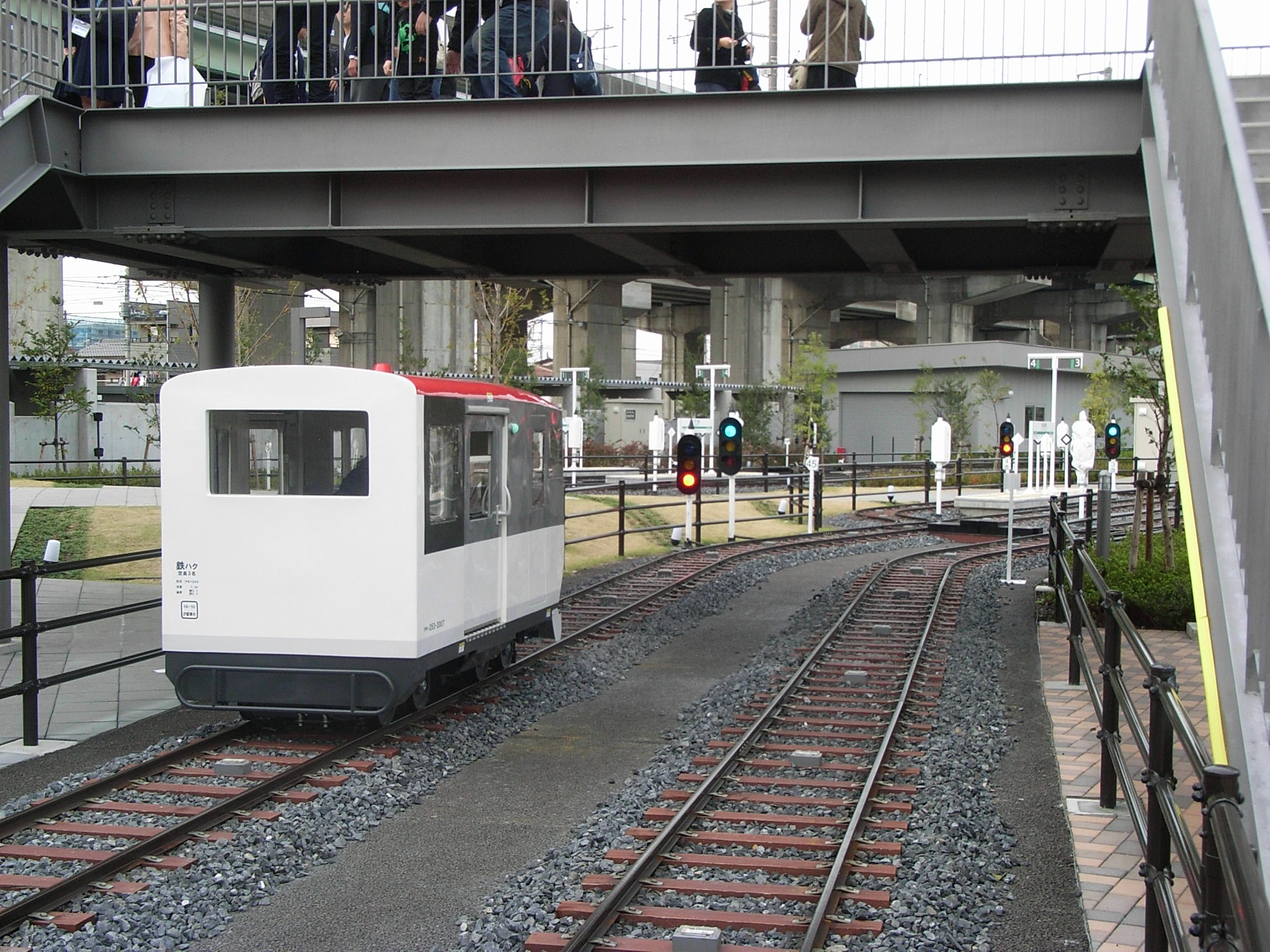
|
An overview of the miniature train attraction.
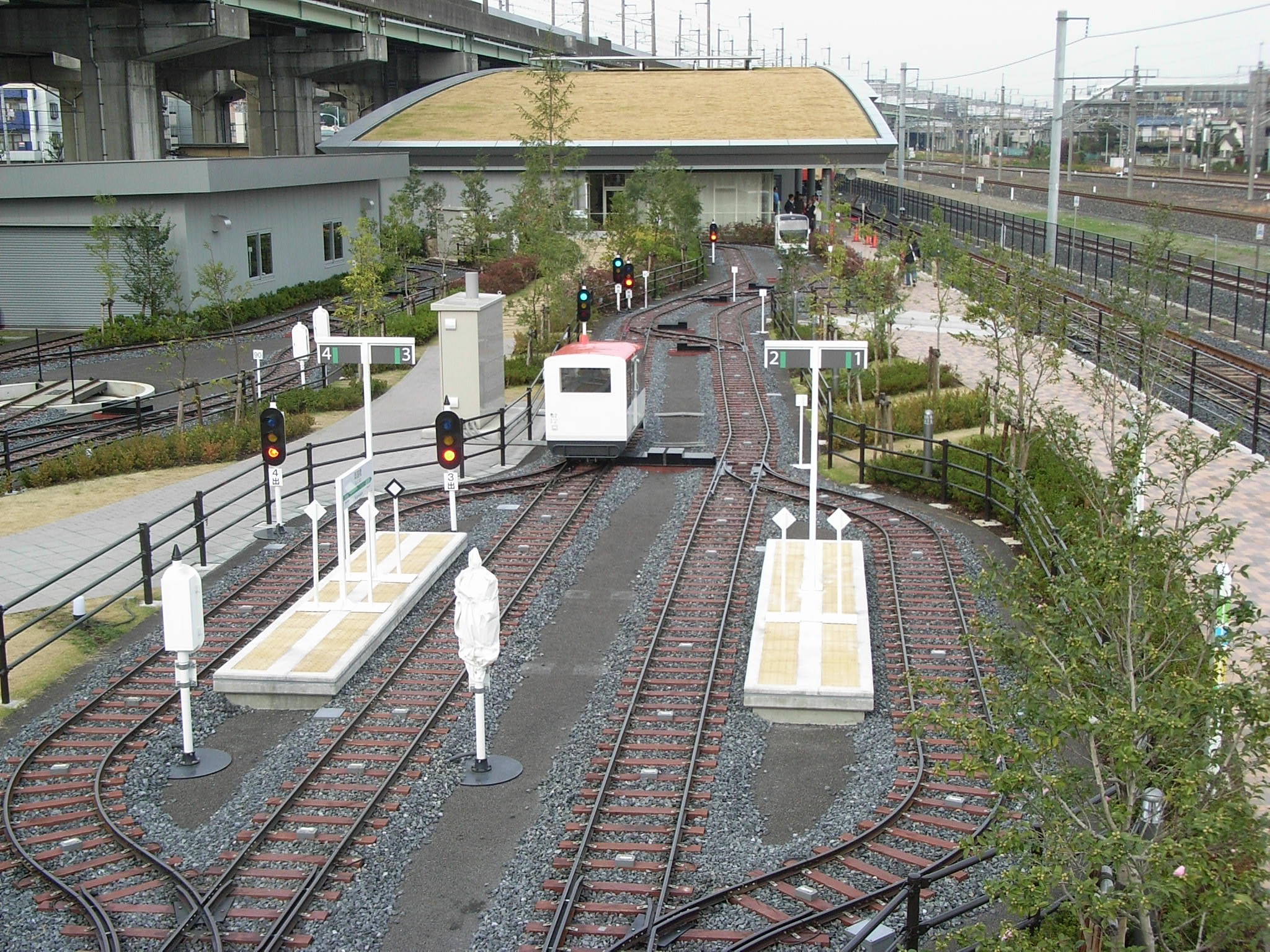
|
The miniaturised
E257 in
use for the limited Express 'Azusa' for the Chuo Main Line.
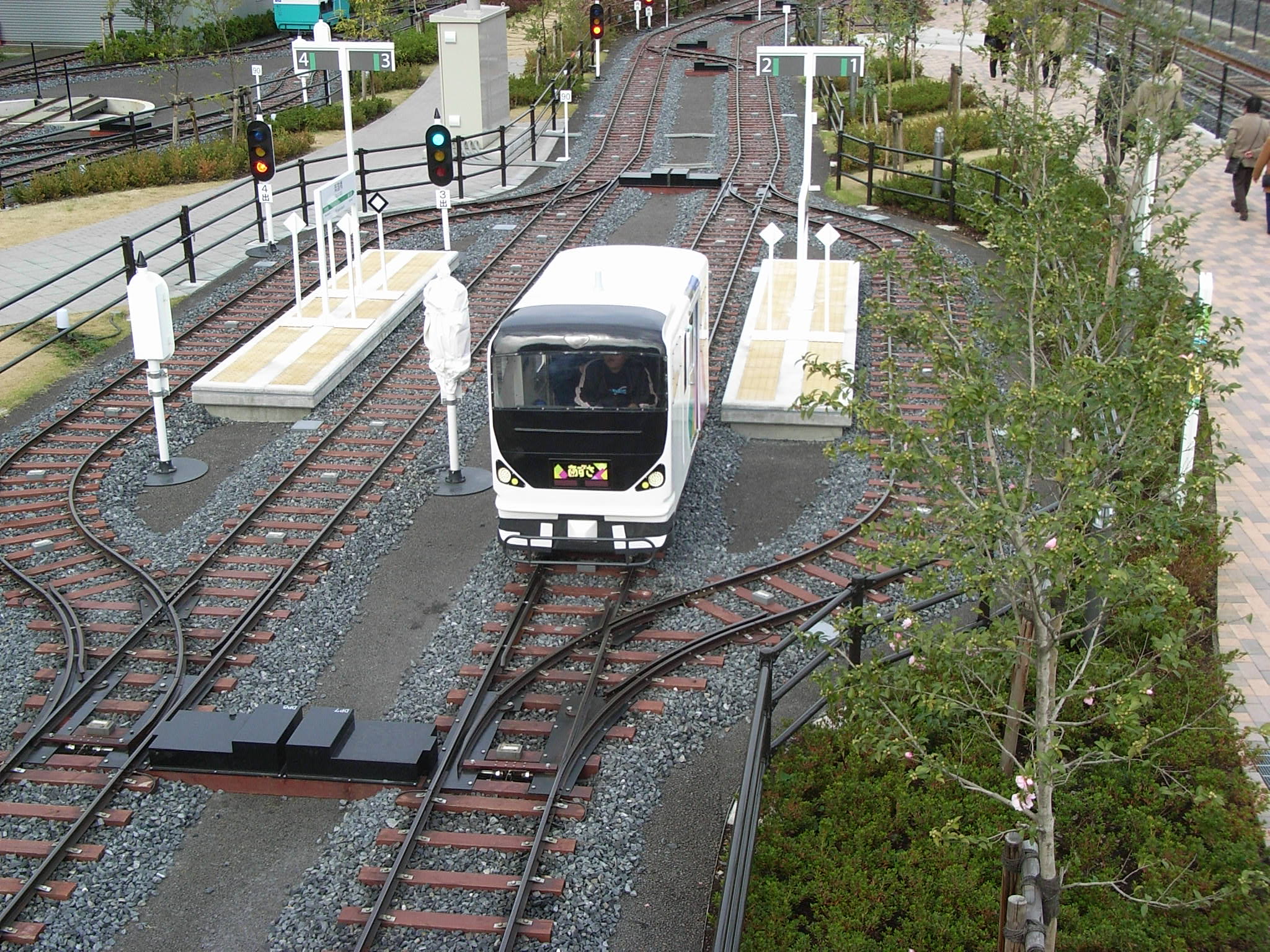
|
The front view of the miniaturised E253
Narira
Express car.
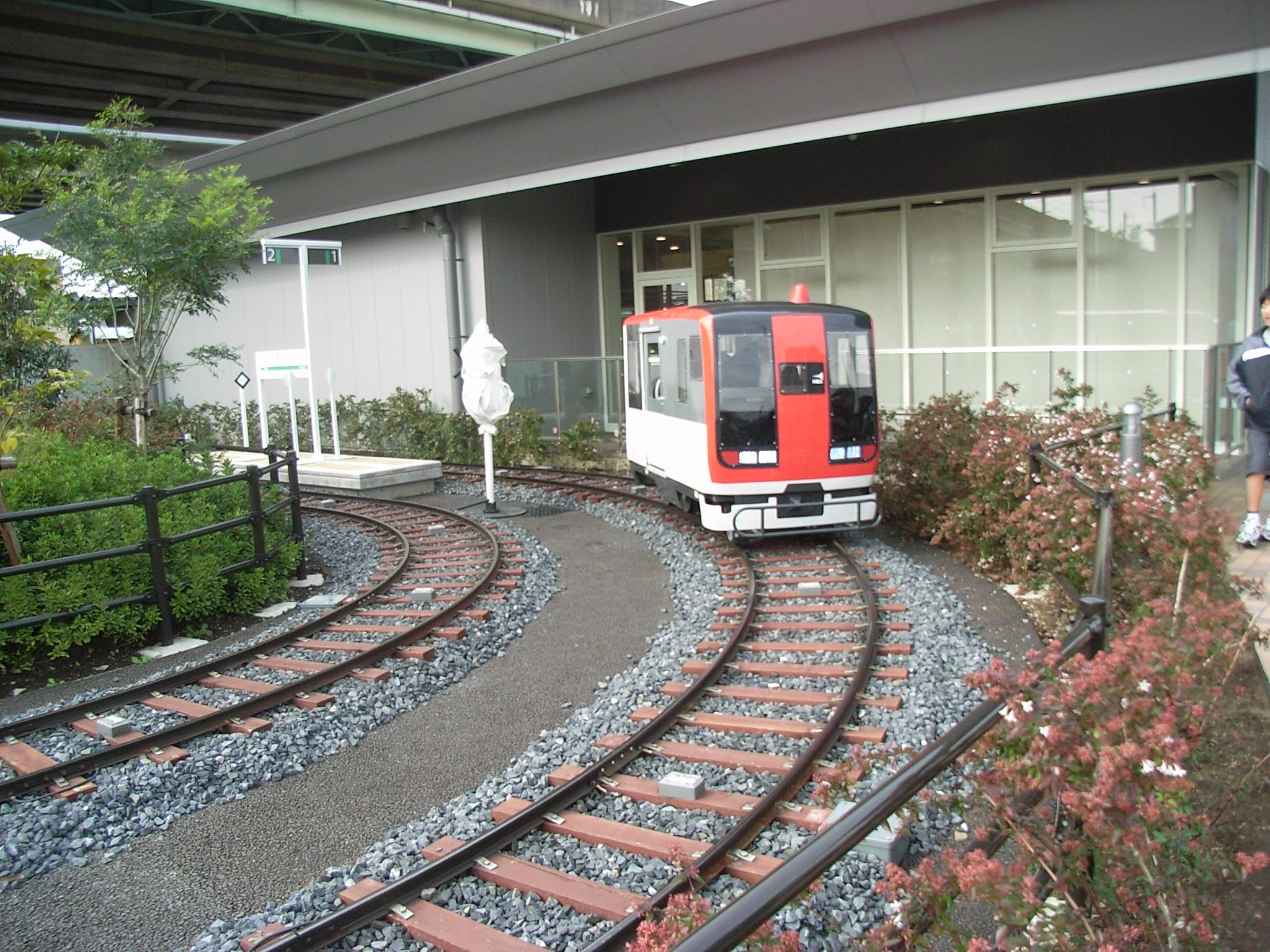
|
A view of the Museum North.
The
picture shows that the track to the museum is connected to the main
lines track
via a spur.
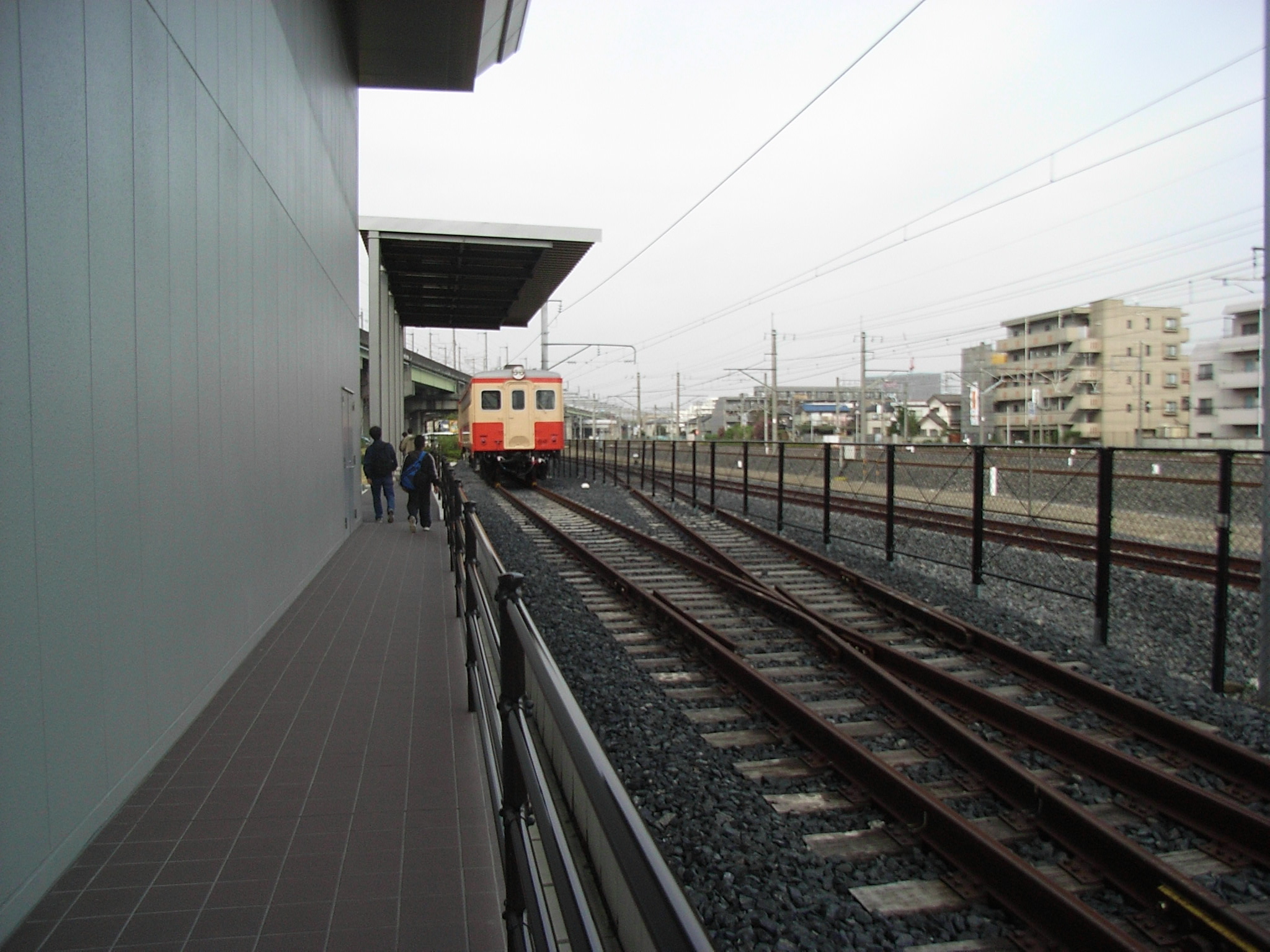
|
The Kiha 11 diesel
hydraulic rail car exhibited at the Museum North. This type, developed
in
1952, featured multiple unit control and was a pioneer for succeeding
modern
DMUs.
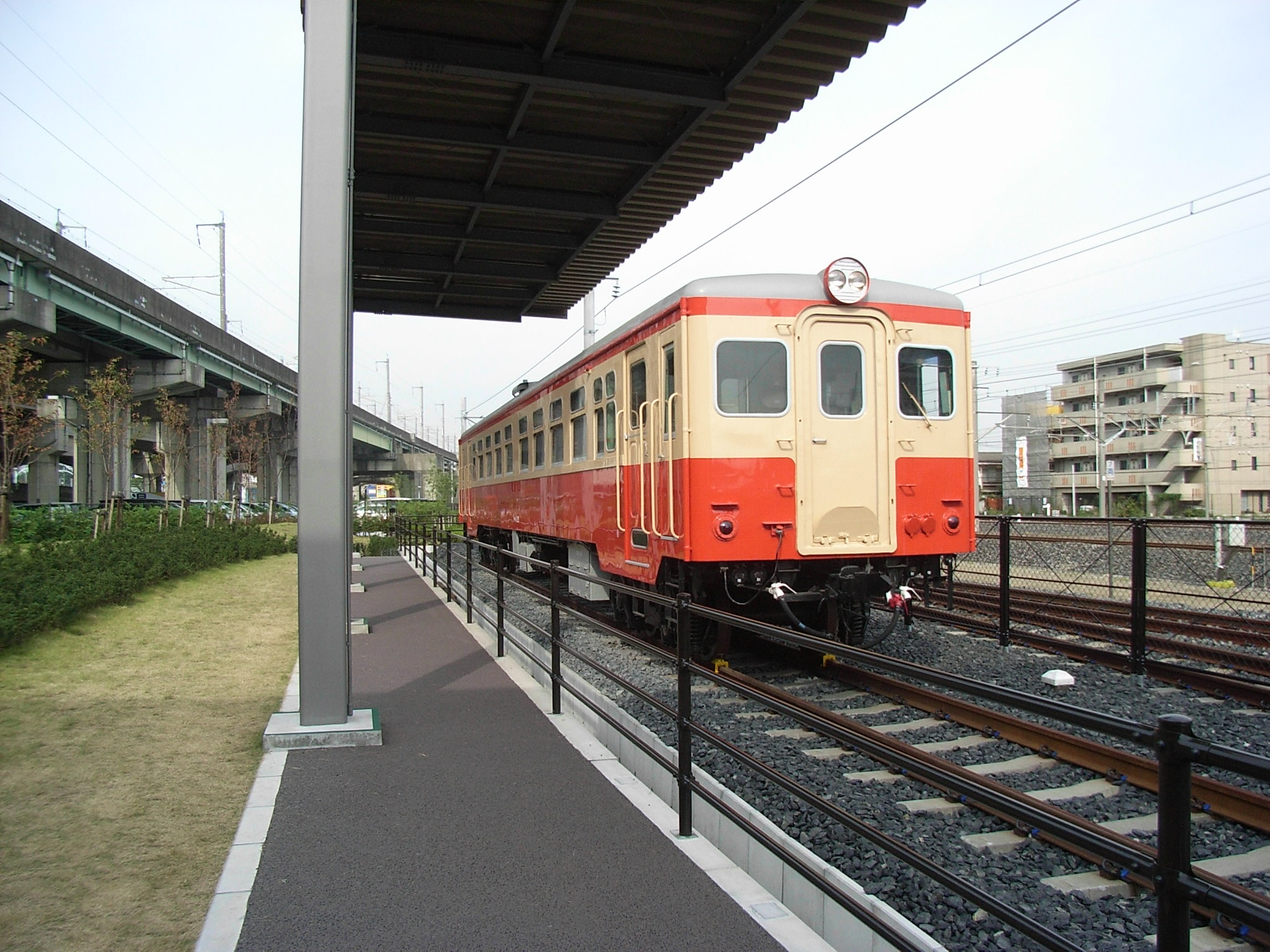
|
You can take a good view of the Tohoku
Shinkansen track from the upstairs floor. Passing by is a 200 series
bullet
train that were withdrawn in March 2013.
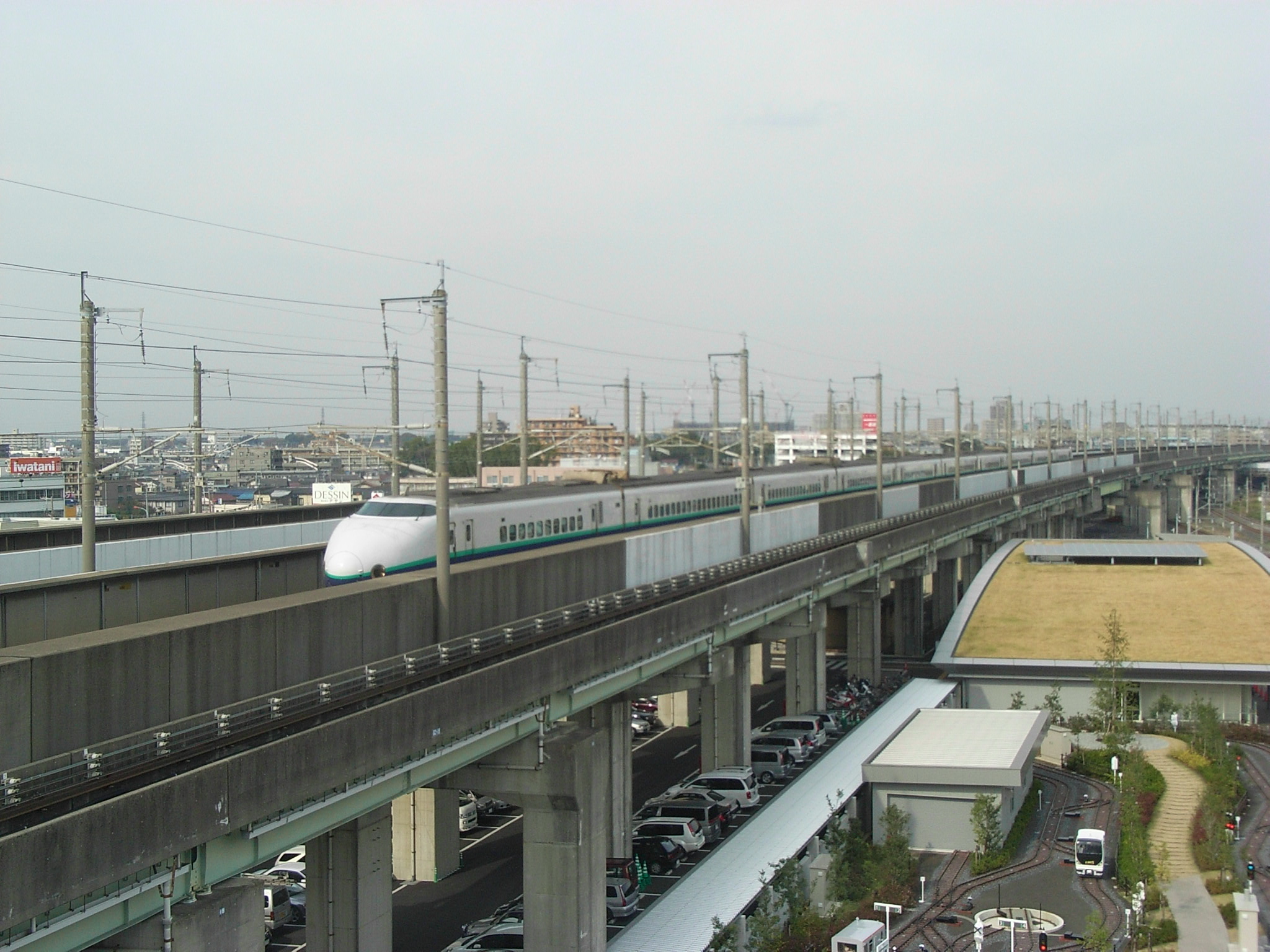
|
The exhibition hall overviewed from the
upstairs floor.
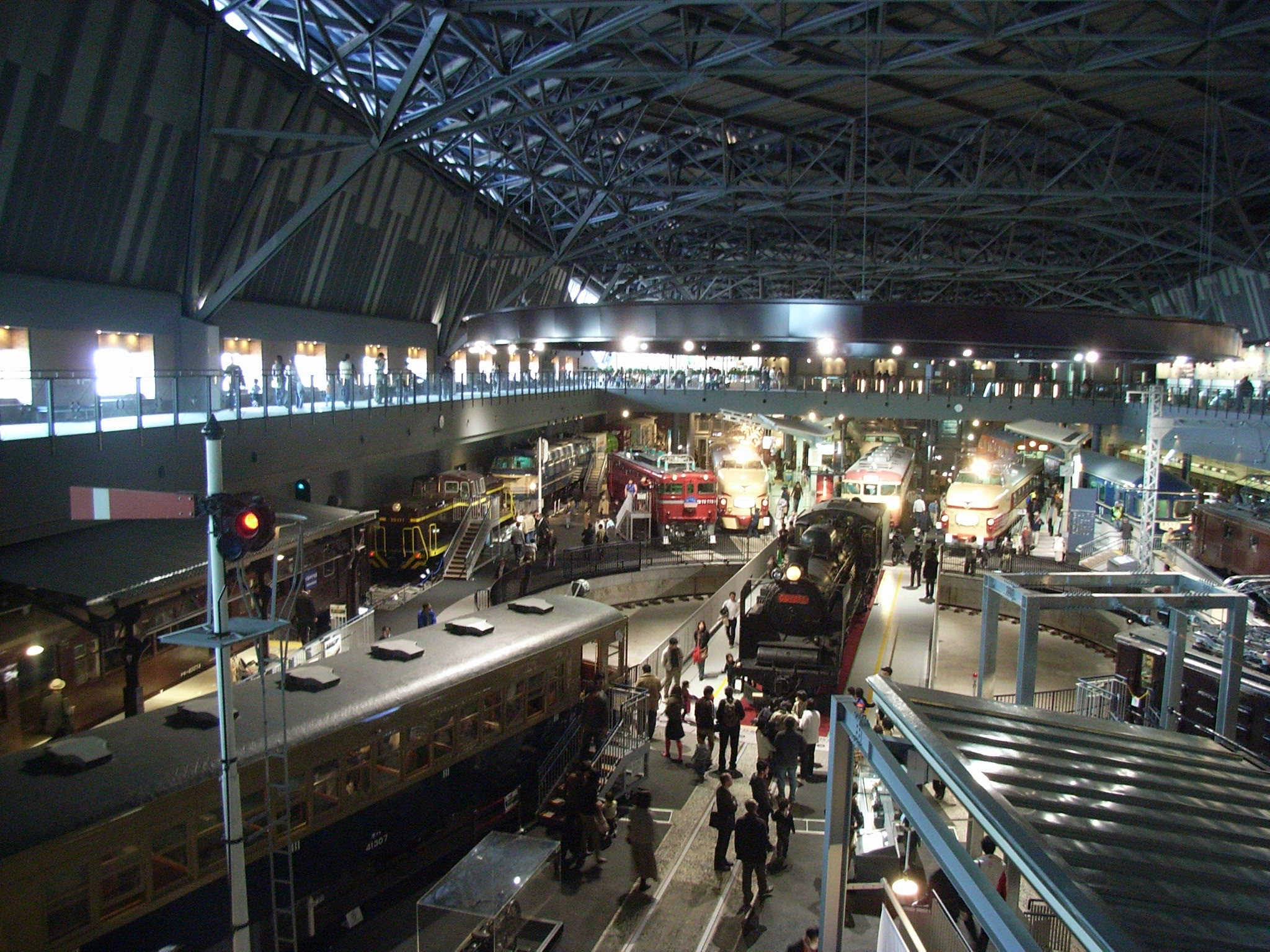
|
The Maite 39
observation
car in a nostalgic ambience of old Tokyo station platform.
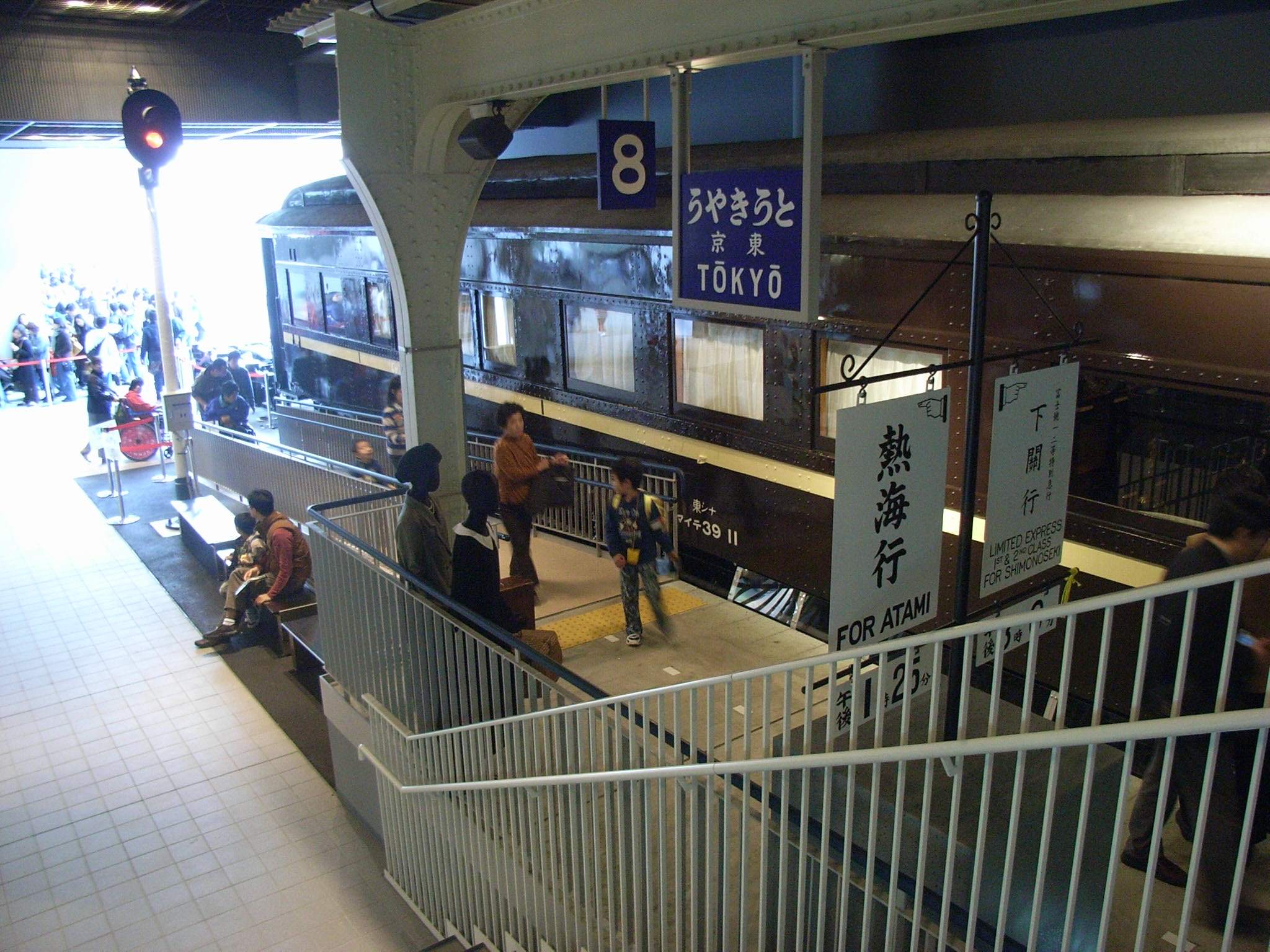
|
The rear end of the Maite
39
observation car with a signboard of the limited express 'Fuji'.
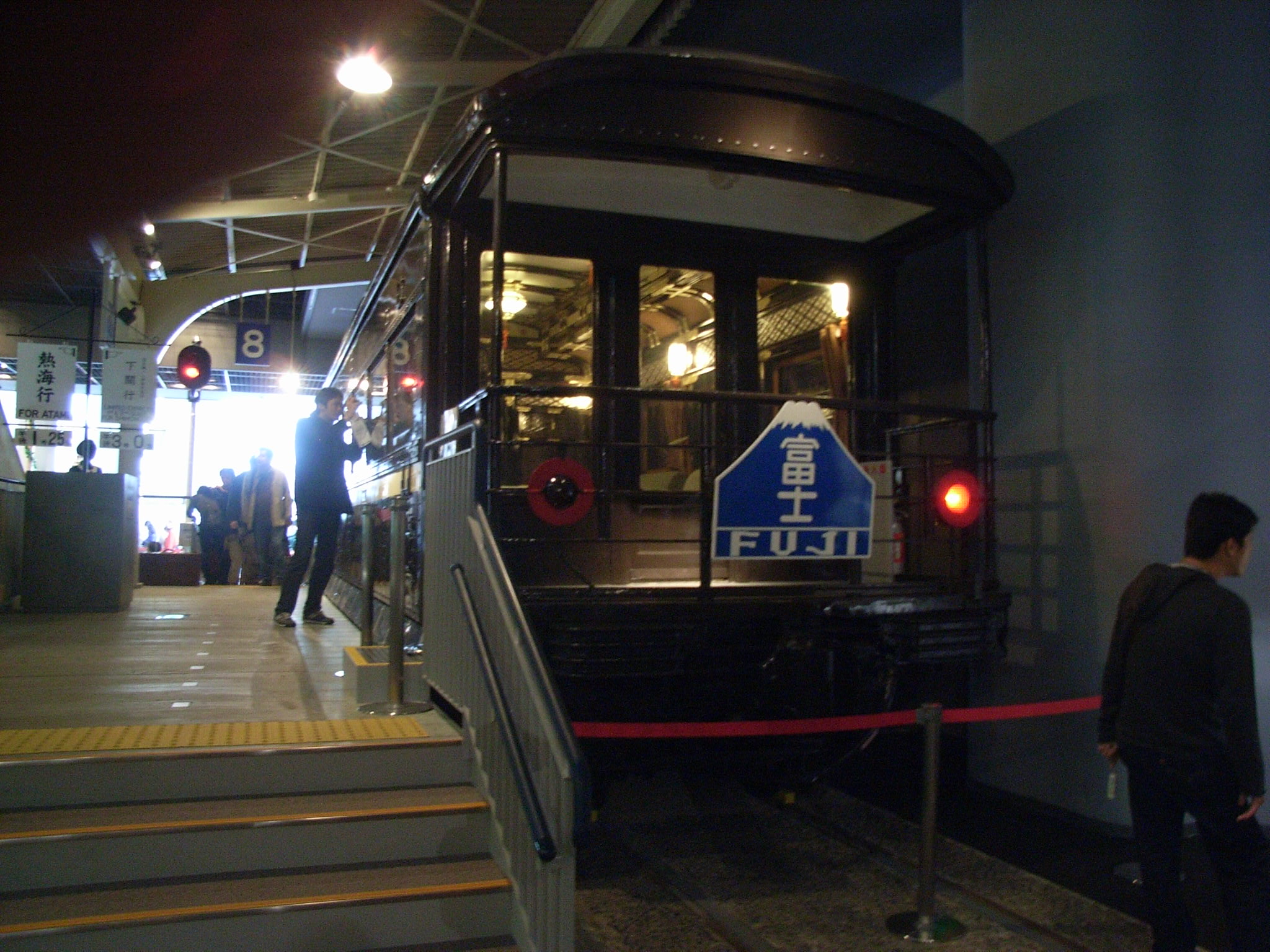
|
Steam locomotive
C57,
4-6-2 Pacific, sits on the turn table at the centre of the exhibition
hall.
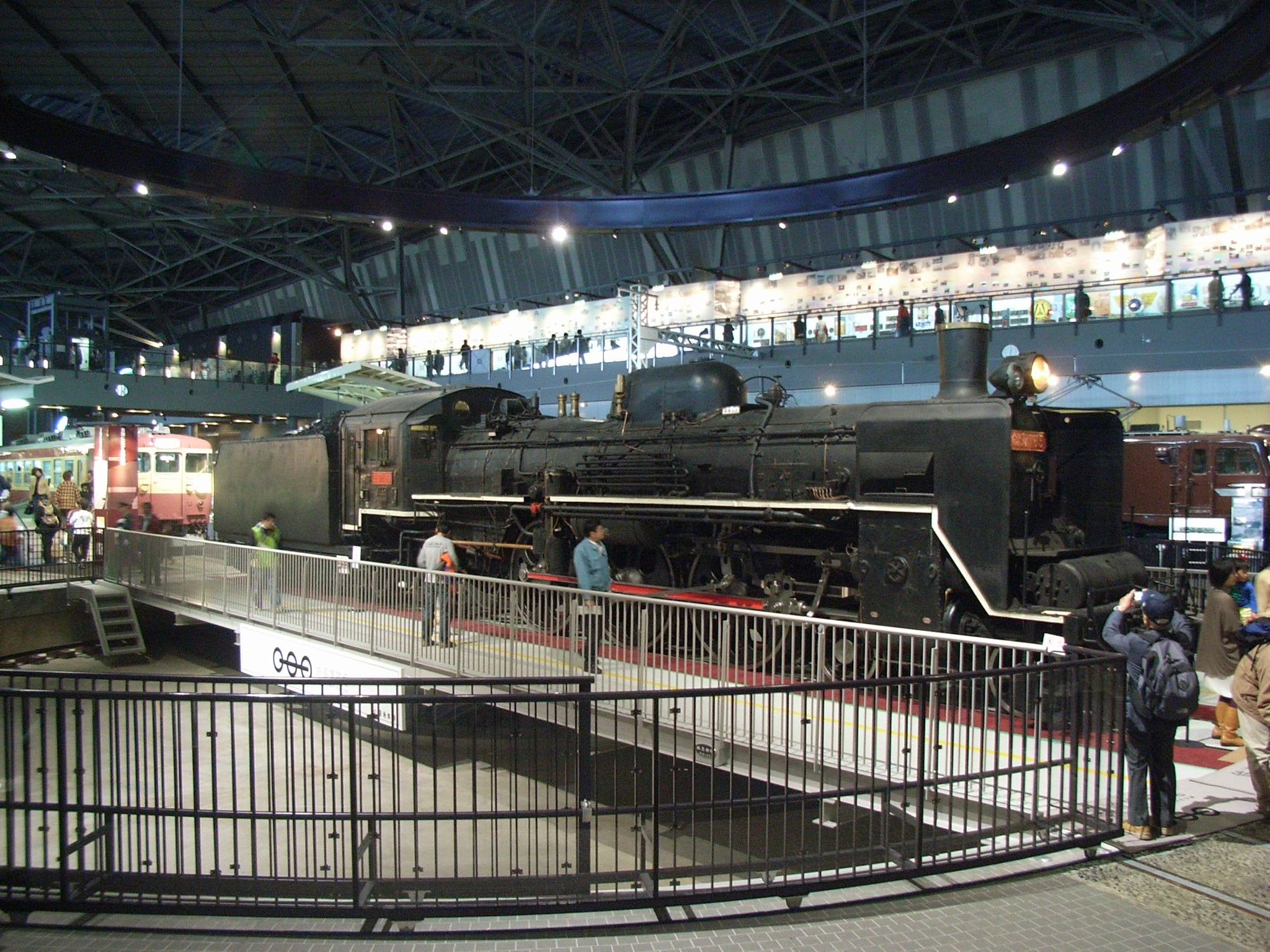
|
Equipment is
displayed on
the track radiating from the turn table.
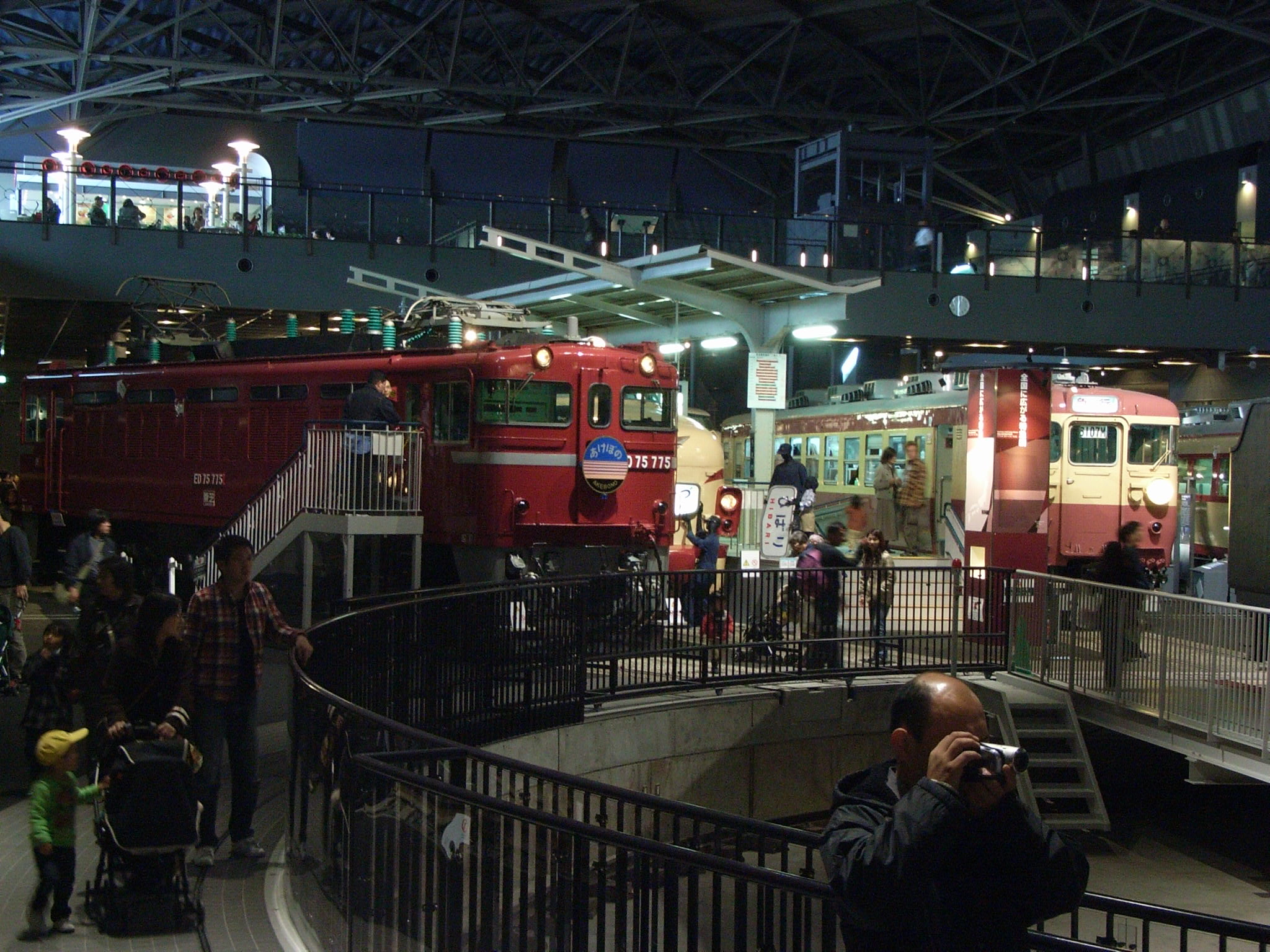
|
Some heavy
electric
locomotives are displayed.
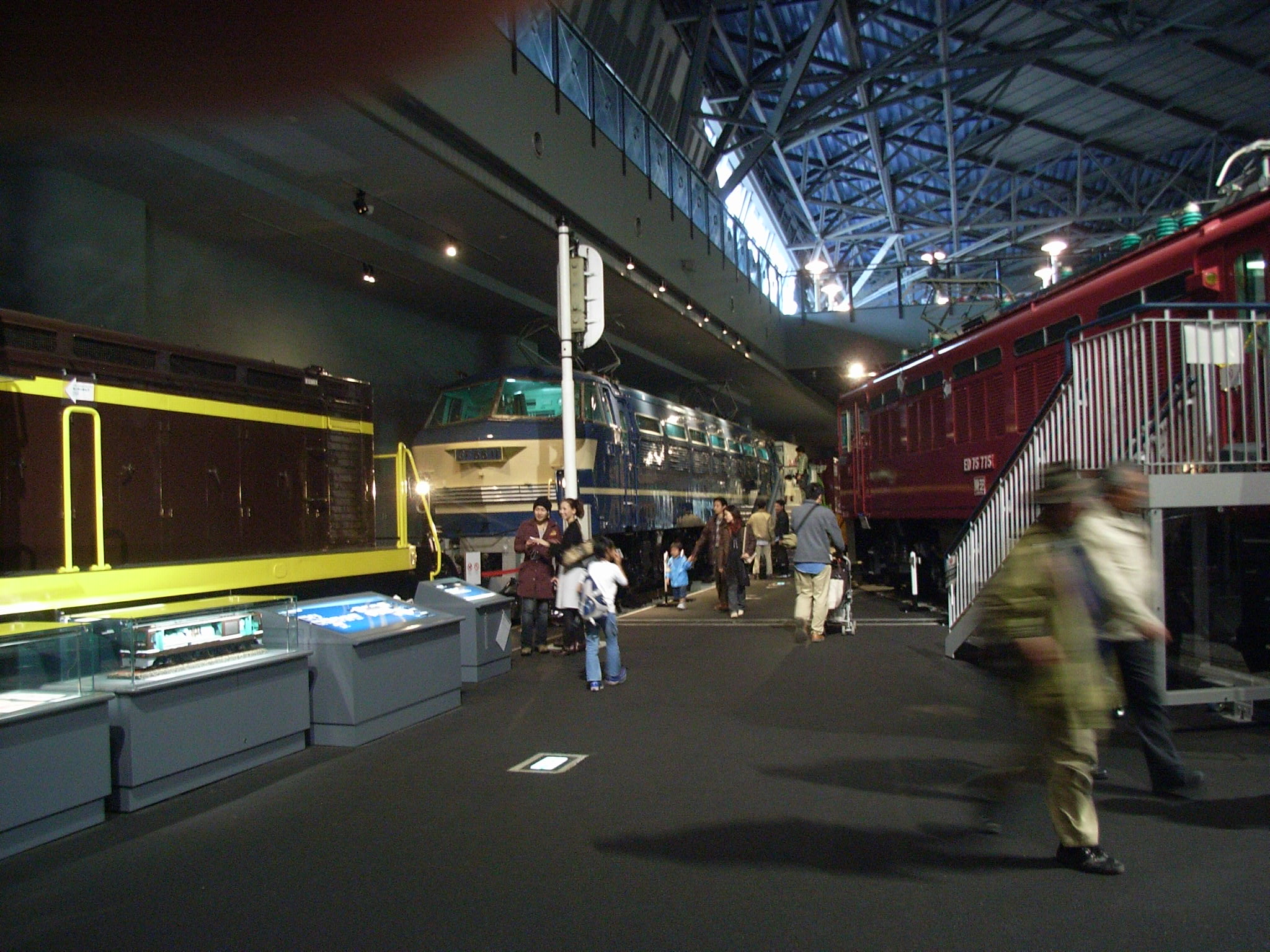
|
To the left is the
451
series AC-powered EMU, which was mainly used for expresses in the AC
electrified territory, while to the right is the 181 series DC-powered
EMU,
which was the main force of the limited expresses in DC electrified
territory in the 1960s through 1980s.
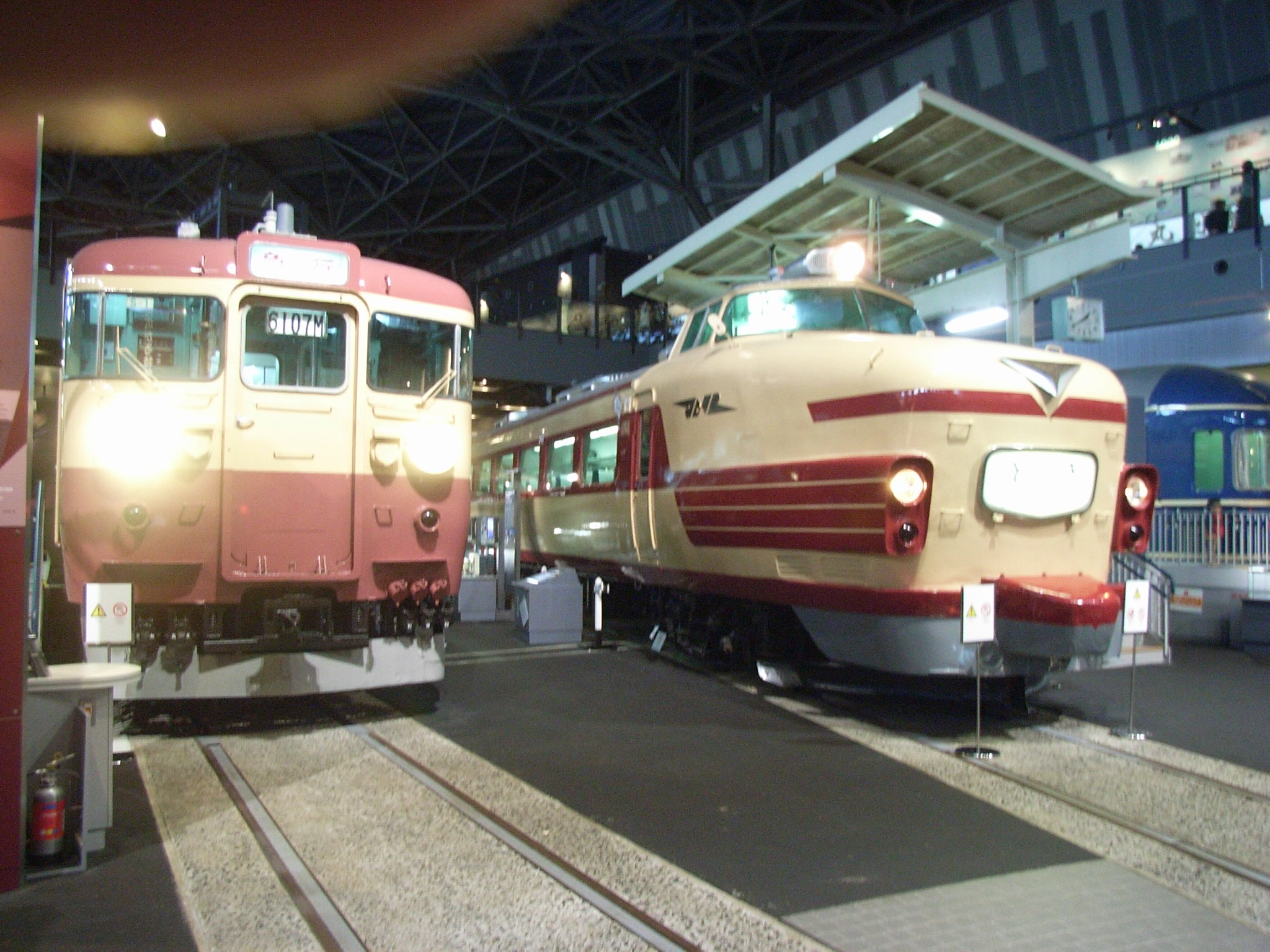 |
ED171 box-cab
electric,
Bo-Bo 870 kW, which was built by English Electric & Co. in 1923.
This type
of electric locomotive had been used for a long period until the 1970s,
with their
final duties on freight haulage on the Chuo Main Line and Nambu line.
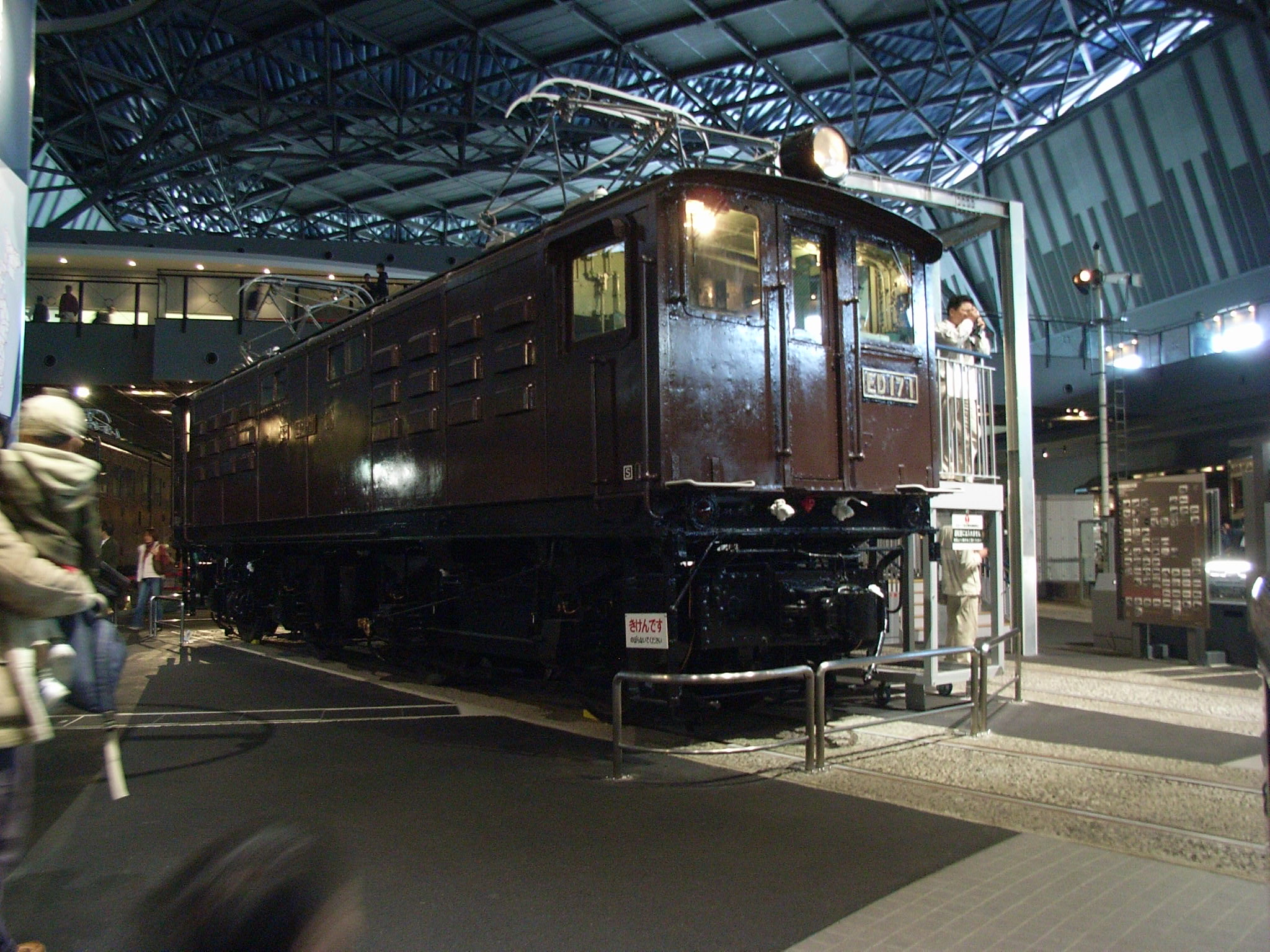
|
Diesel hydraulic
railcar
Type Kiha 41000, #41307. This car was originally a petrol railcar
built in 1937, and upgraded to a DMU in 1952 with its engine having had been
replaced along with a hydraulic control unit newly fitted.
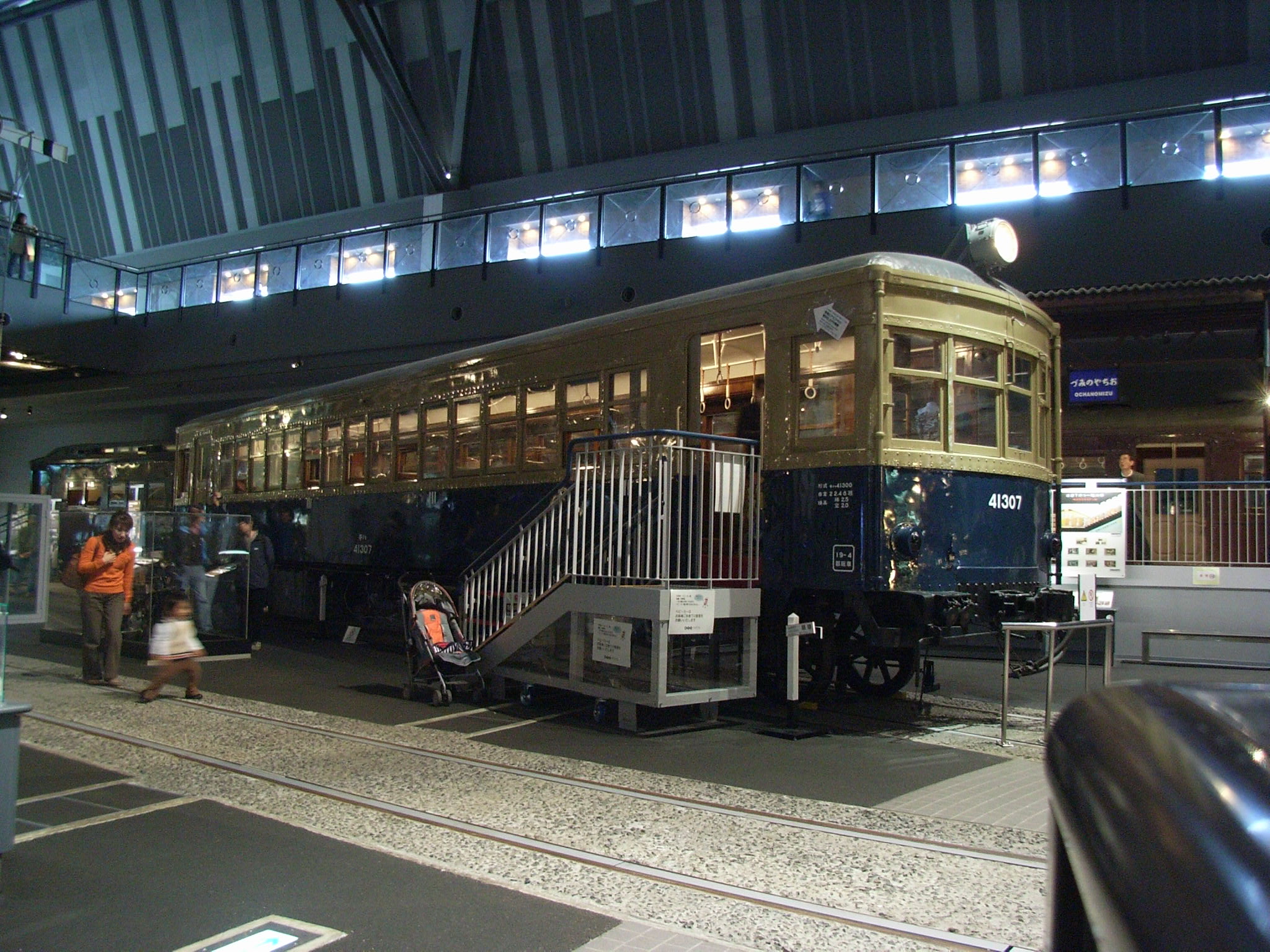
|
Streamlined
electric EF58,
2-Bo-Bo-2 1600 kW dedicated to passenger train haulage. This locomotive
was
the most common electric in DC electrified territory in the 1960s
through
1970s before the EMU era.
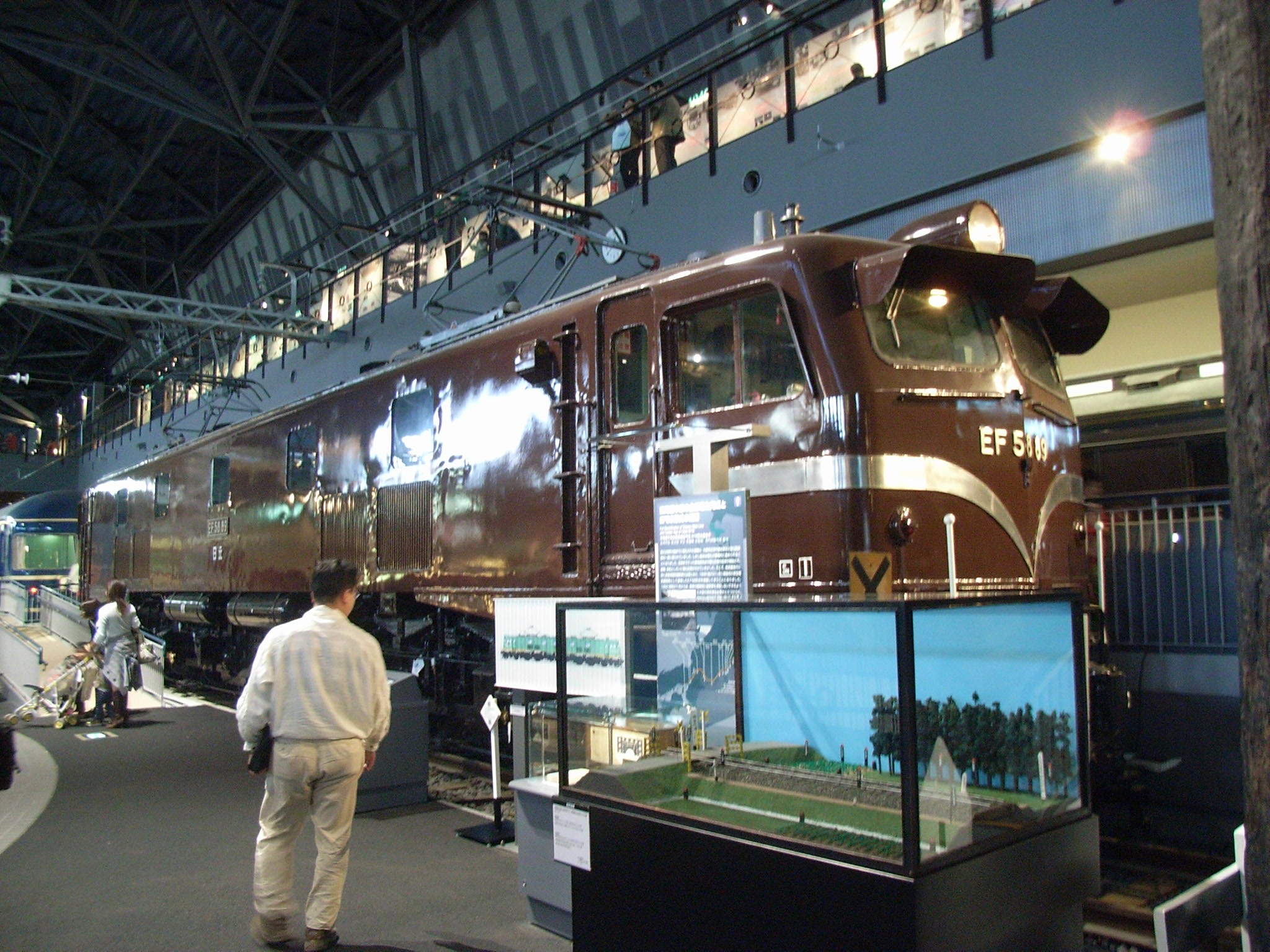
|
Another view of
the main
exhibition hall.
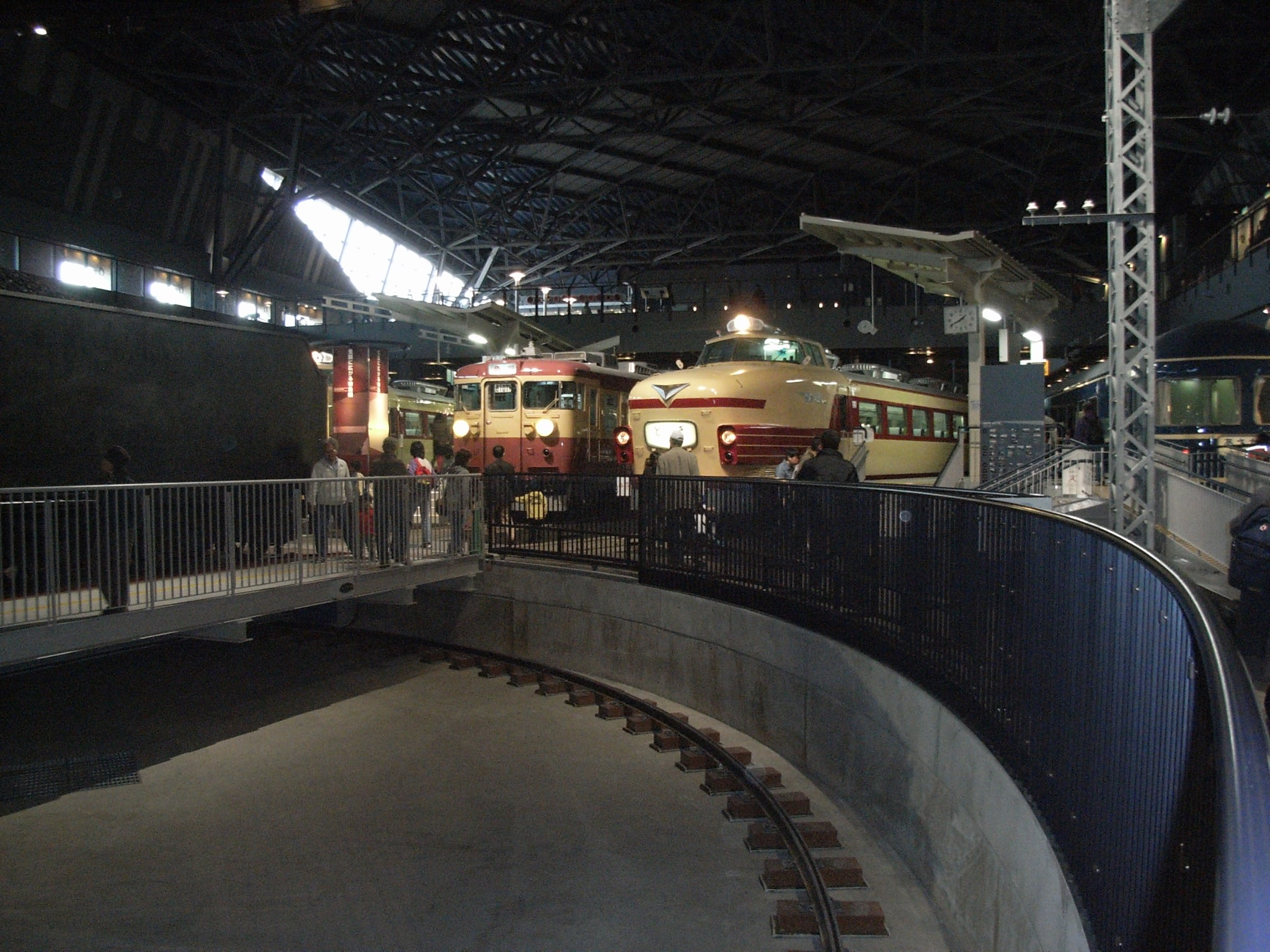 |
Type Oha 31 third
class
passenger car, the first half-steel carriage built in 1927.
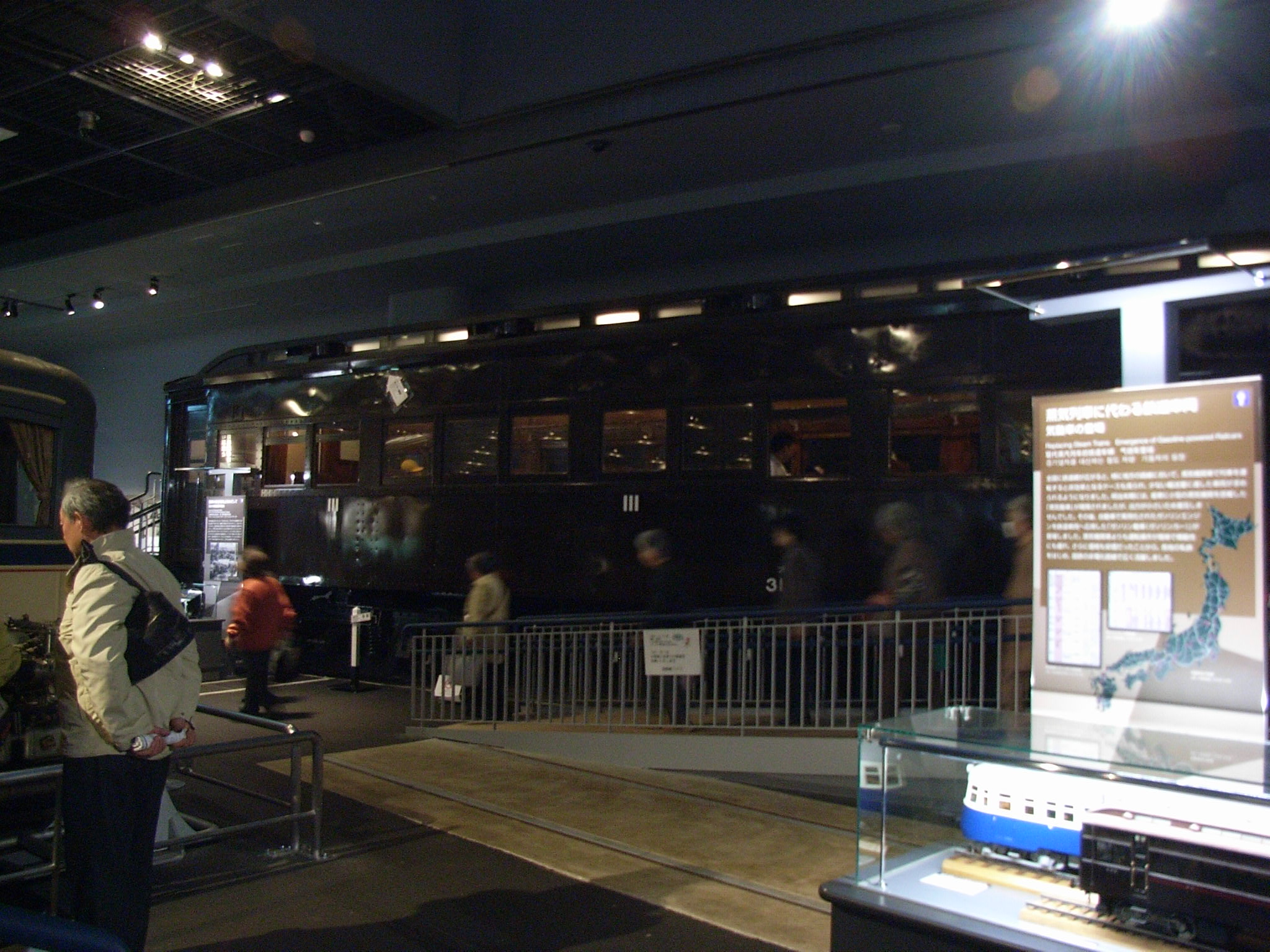
|
A cut-model of an
old
wooden EMU.
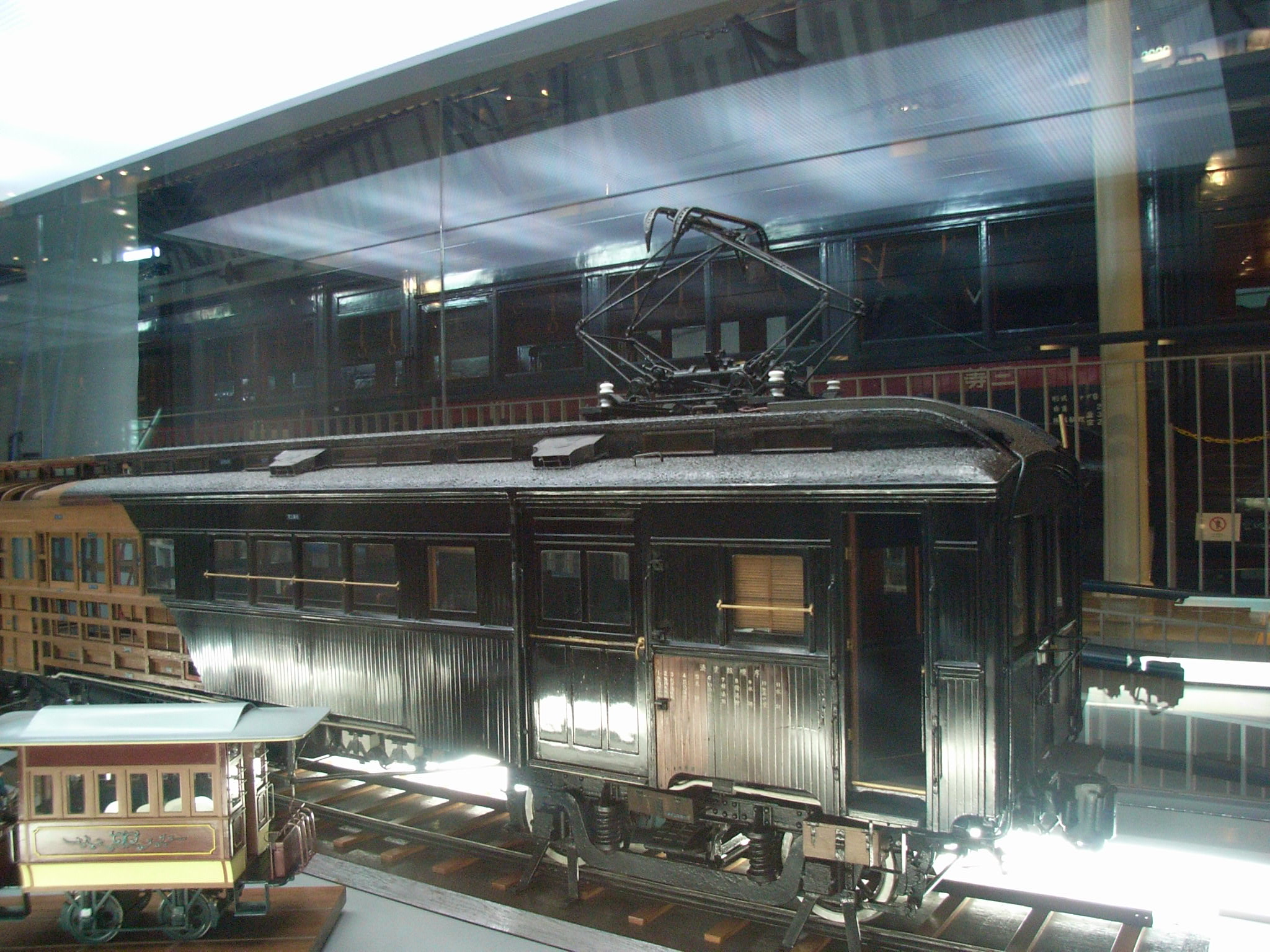
|
The first electric
rail
car employed by the governmental railway, built in 1907.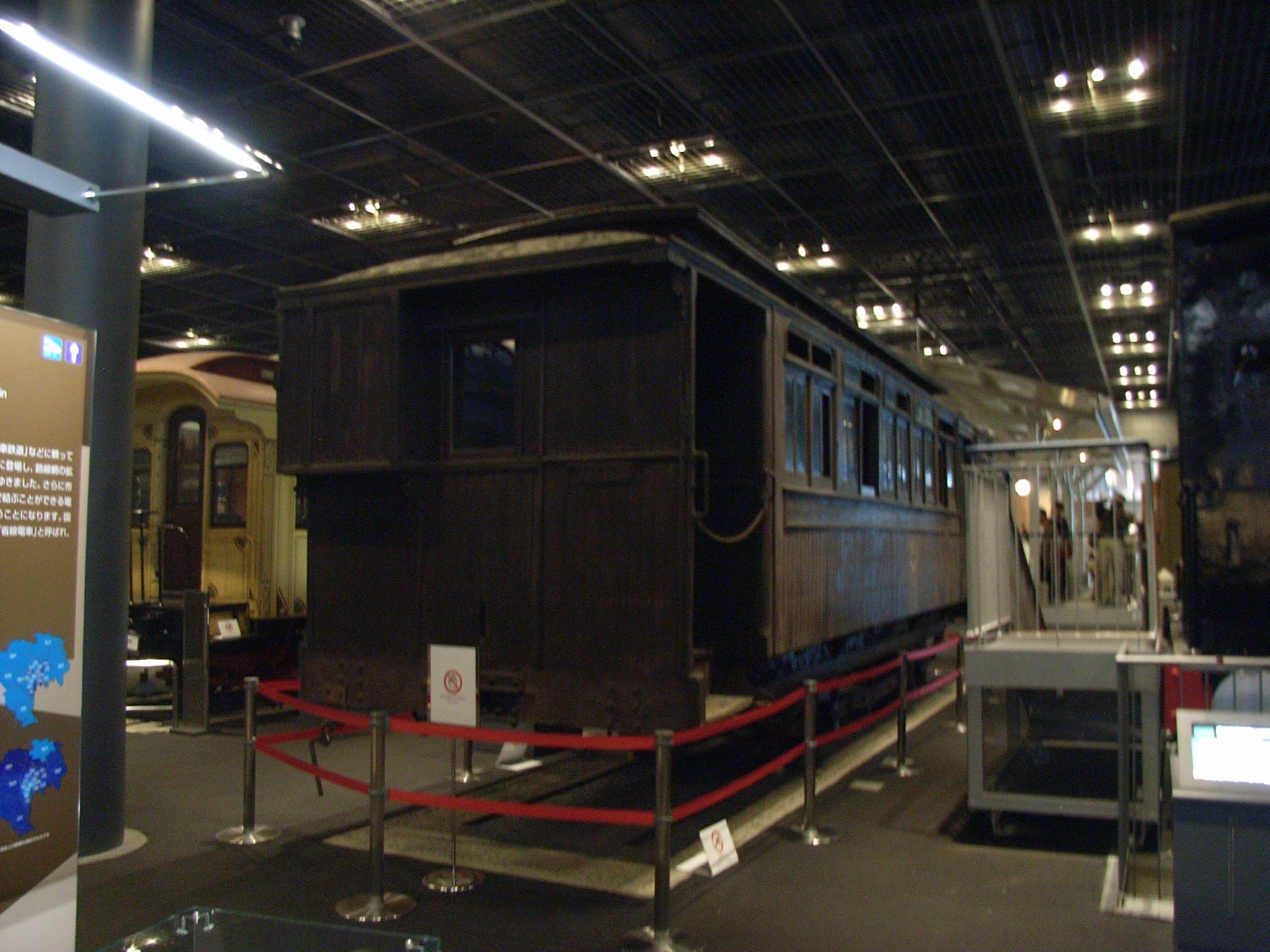 |
The first commuter EMU
built
by the governmental railway in 1914.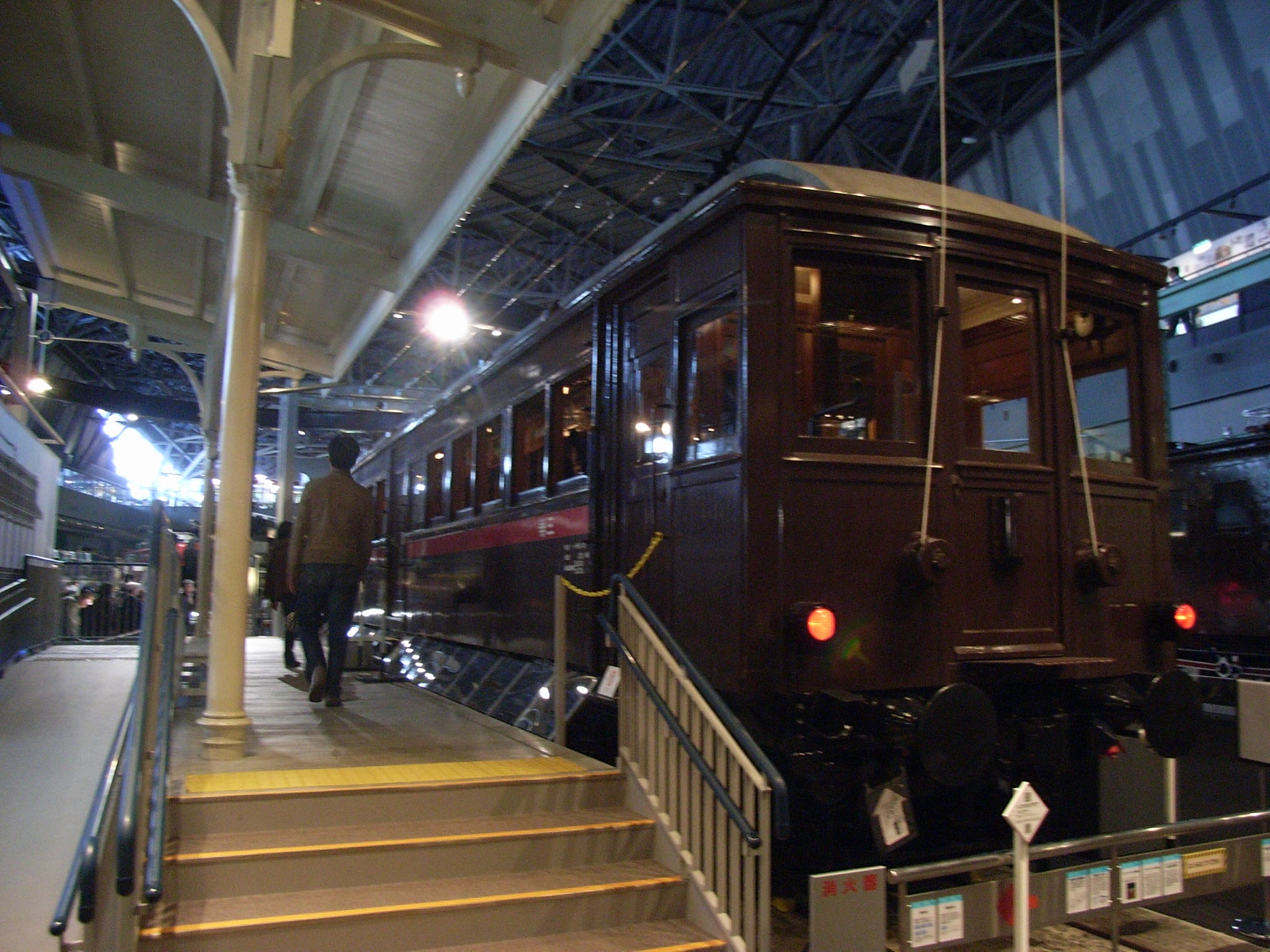
|
#8700, 2-6-0
Mogul, built
by Porter in the US in 1880. This locomotive was used by the first
railway
in Hokkaido where railway technology was introduced from the US.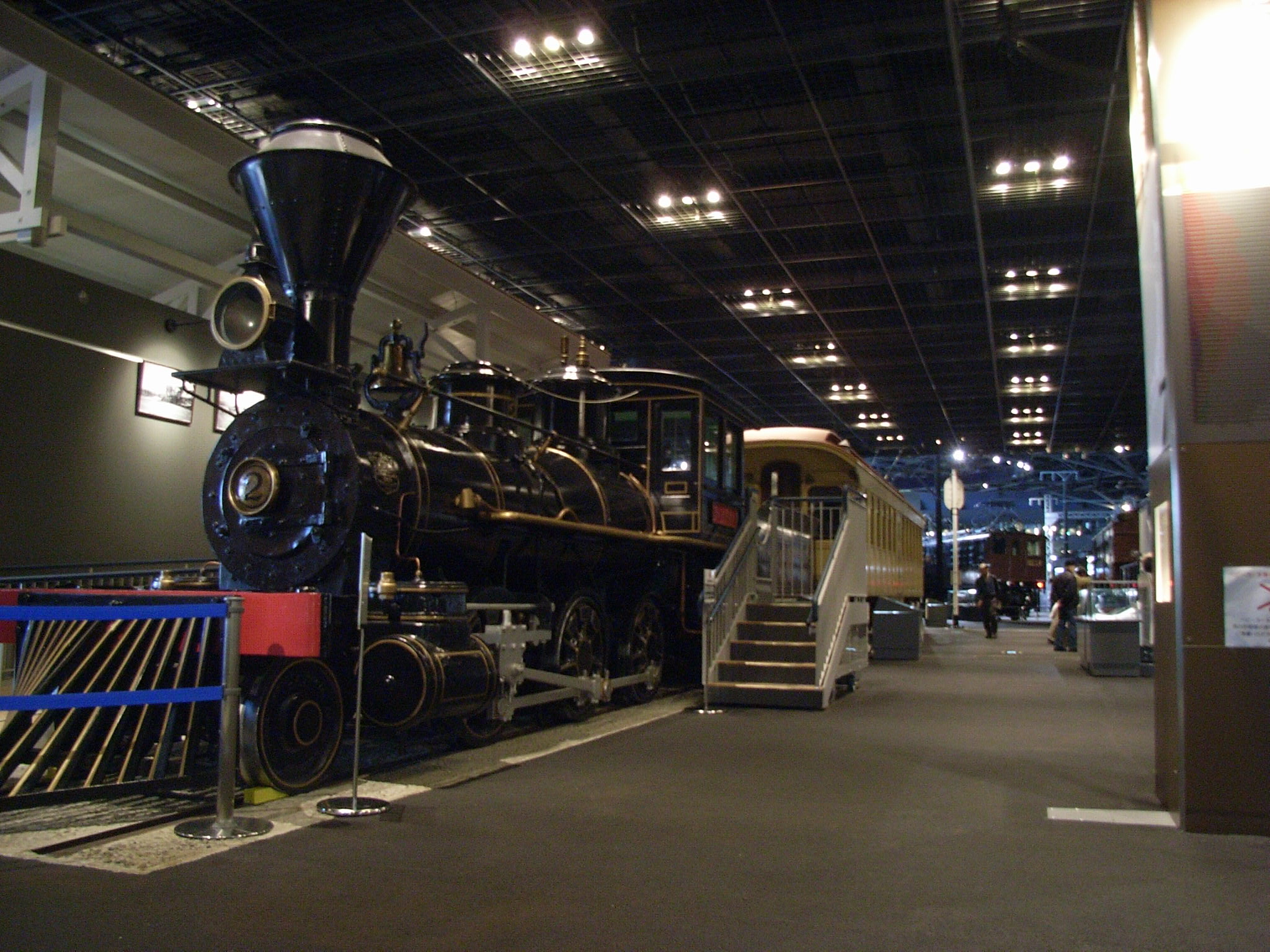
|
An interior
example of
passenger cars in the 1920s.
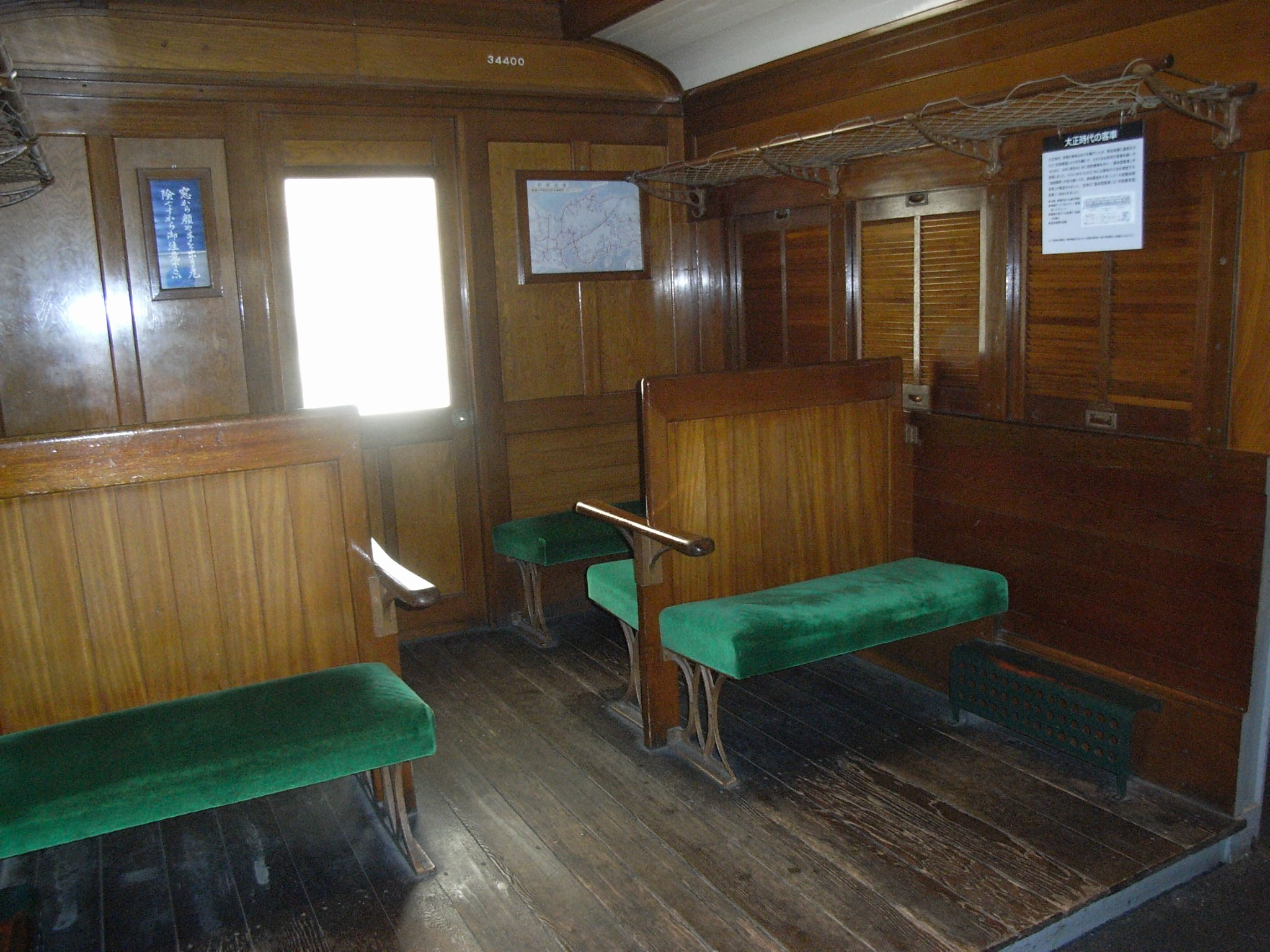 |
The interior of
the Oha 31
passenger car.
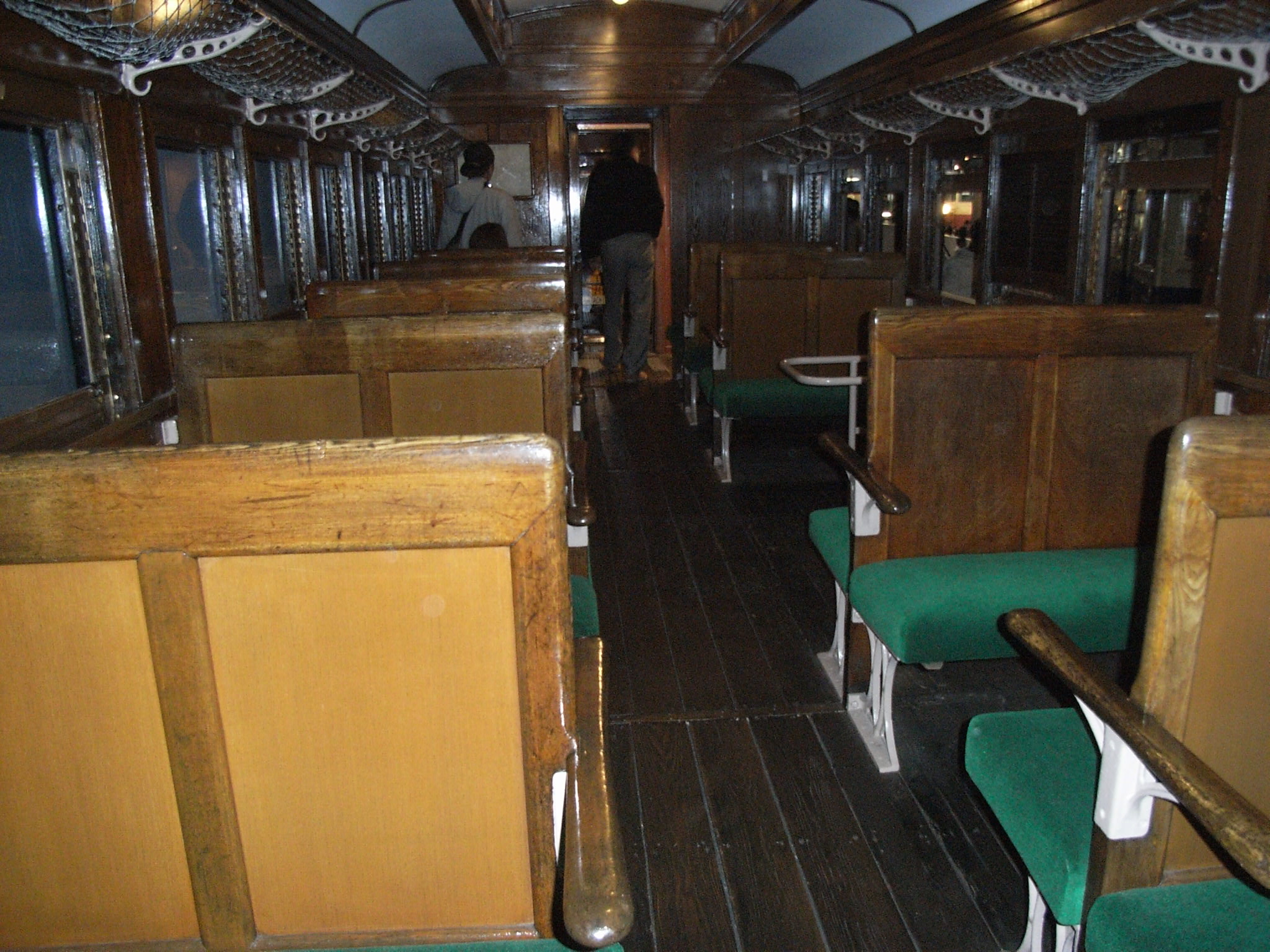
|
The interior of
the Oha 31
passenger car.
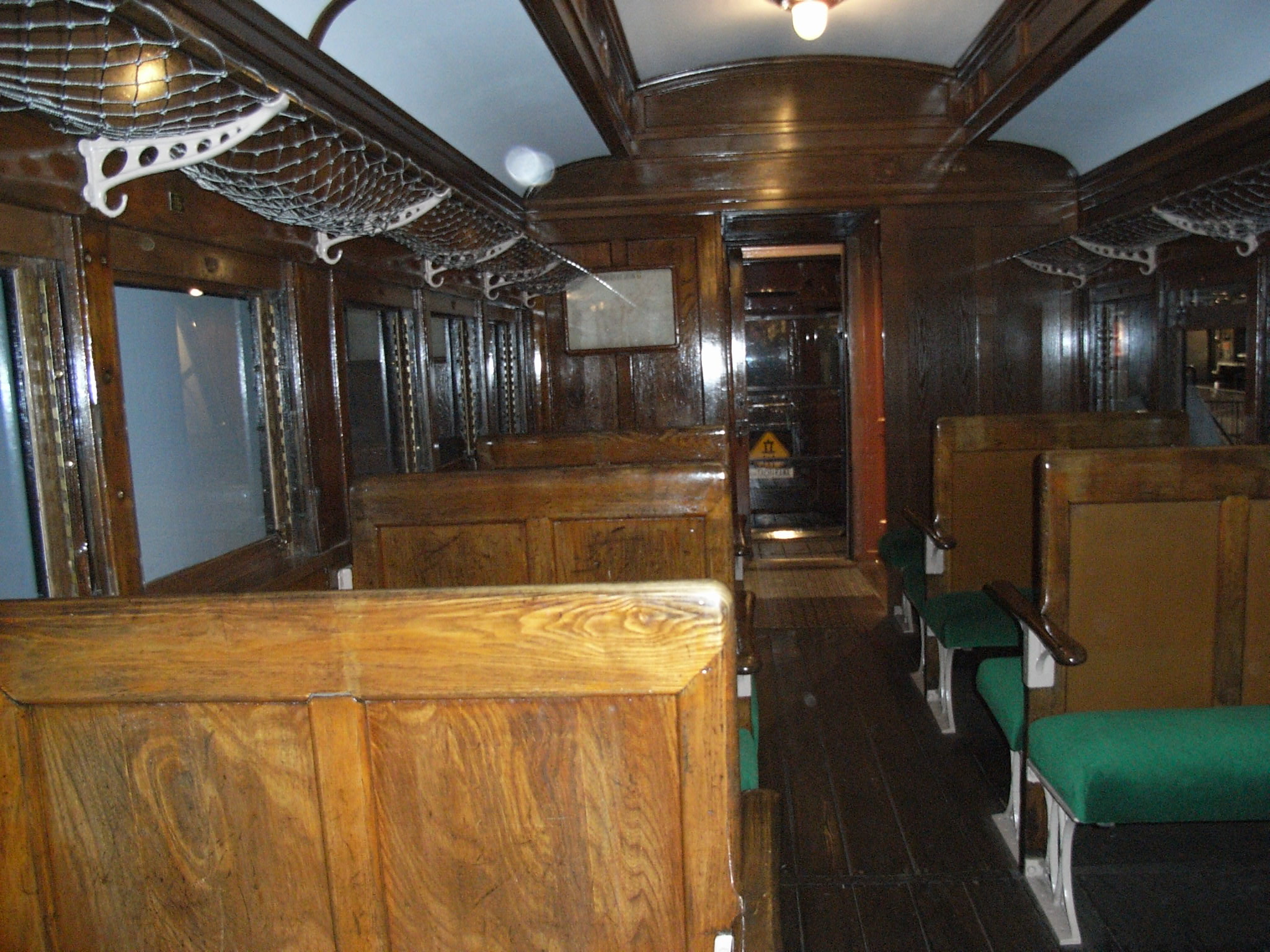
|
A typical example
of the
pre-war type EMU used for the Chuo commuter line, type Moha 40.
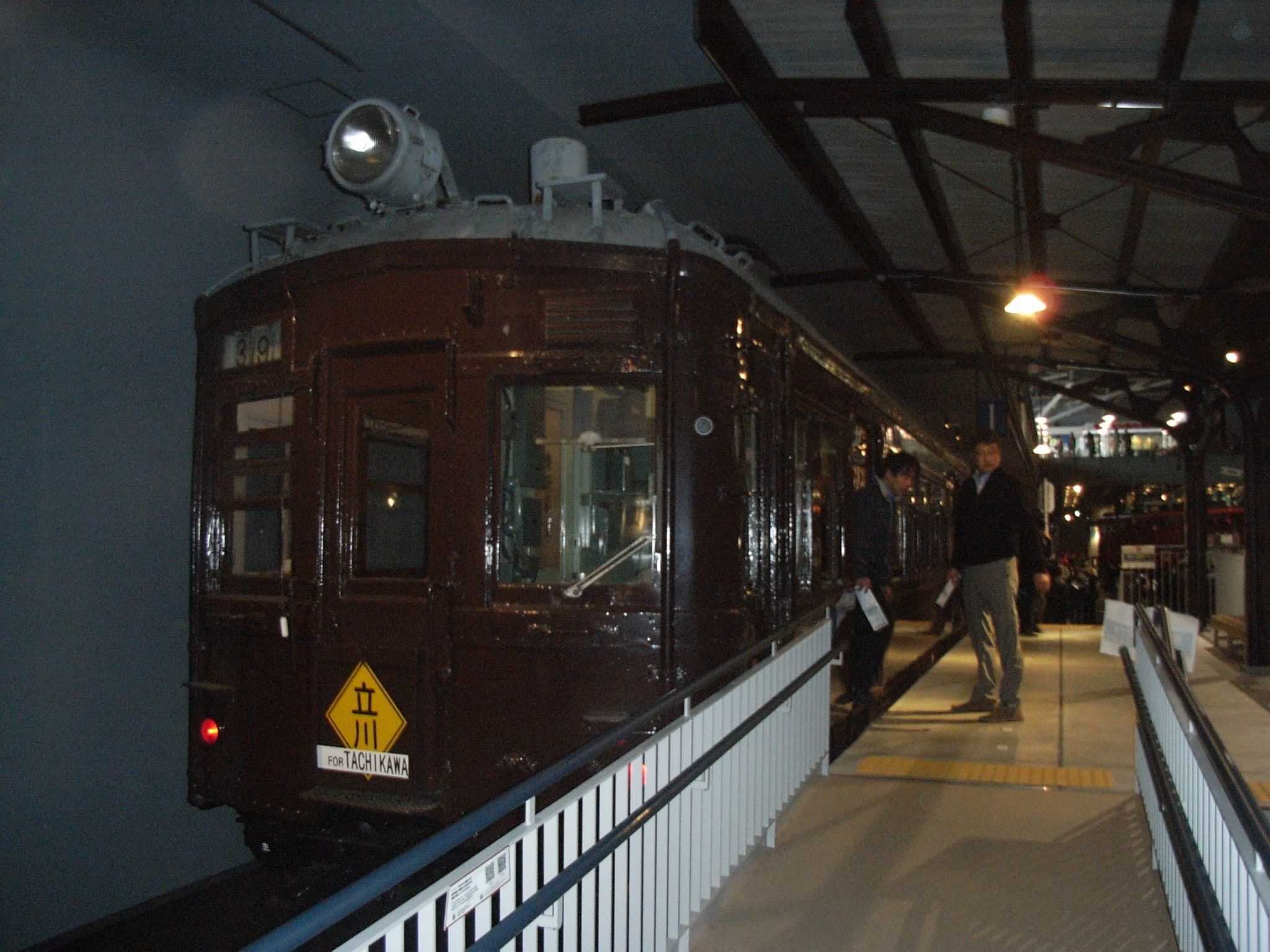
|
The interrior of the Moha 40 commuter EMU.
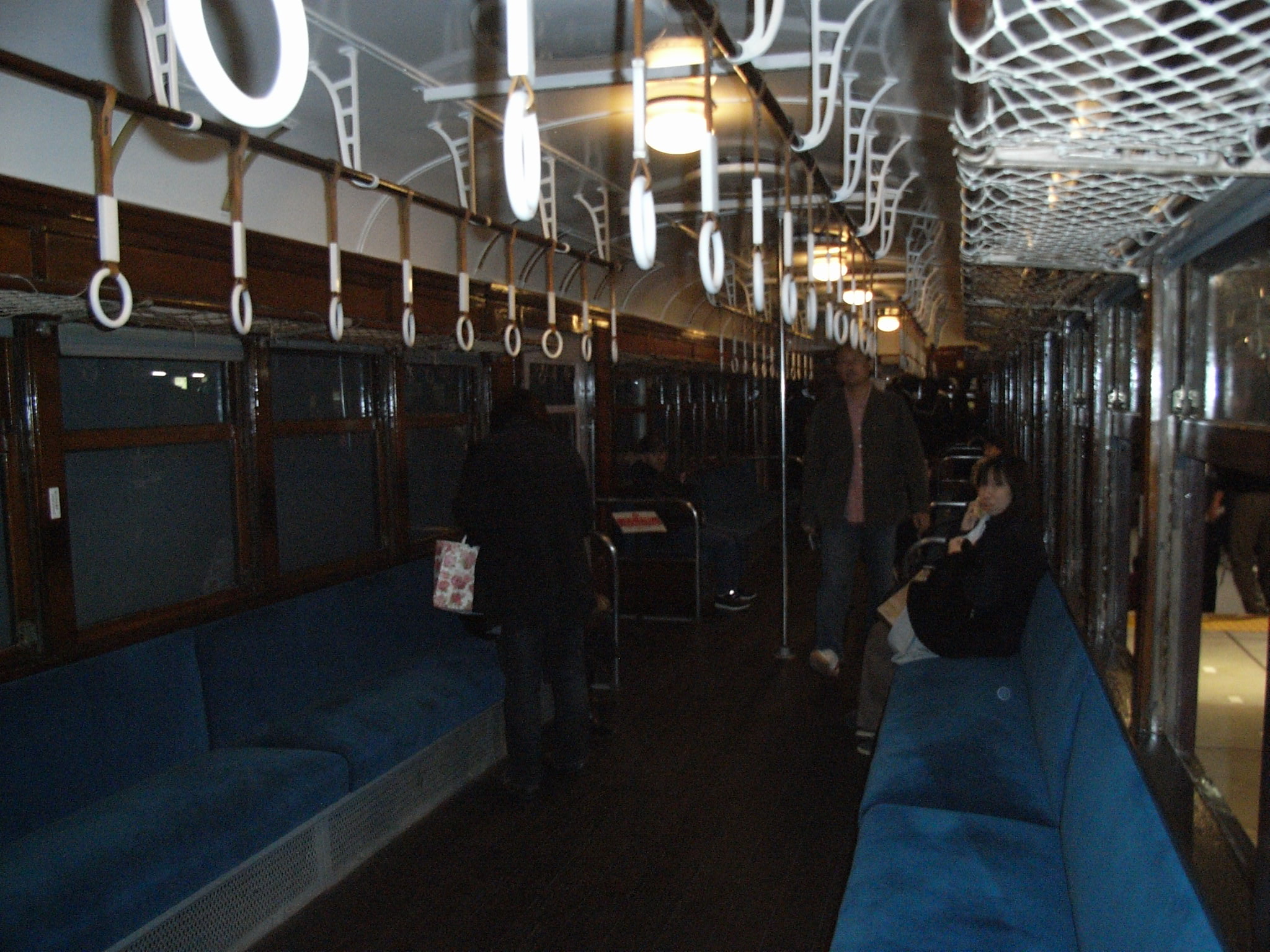 |
Concealded at the left-hand side is the driver's cabin, on
the Moha
40 commuter EMU.
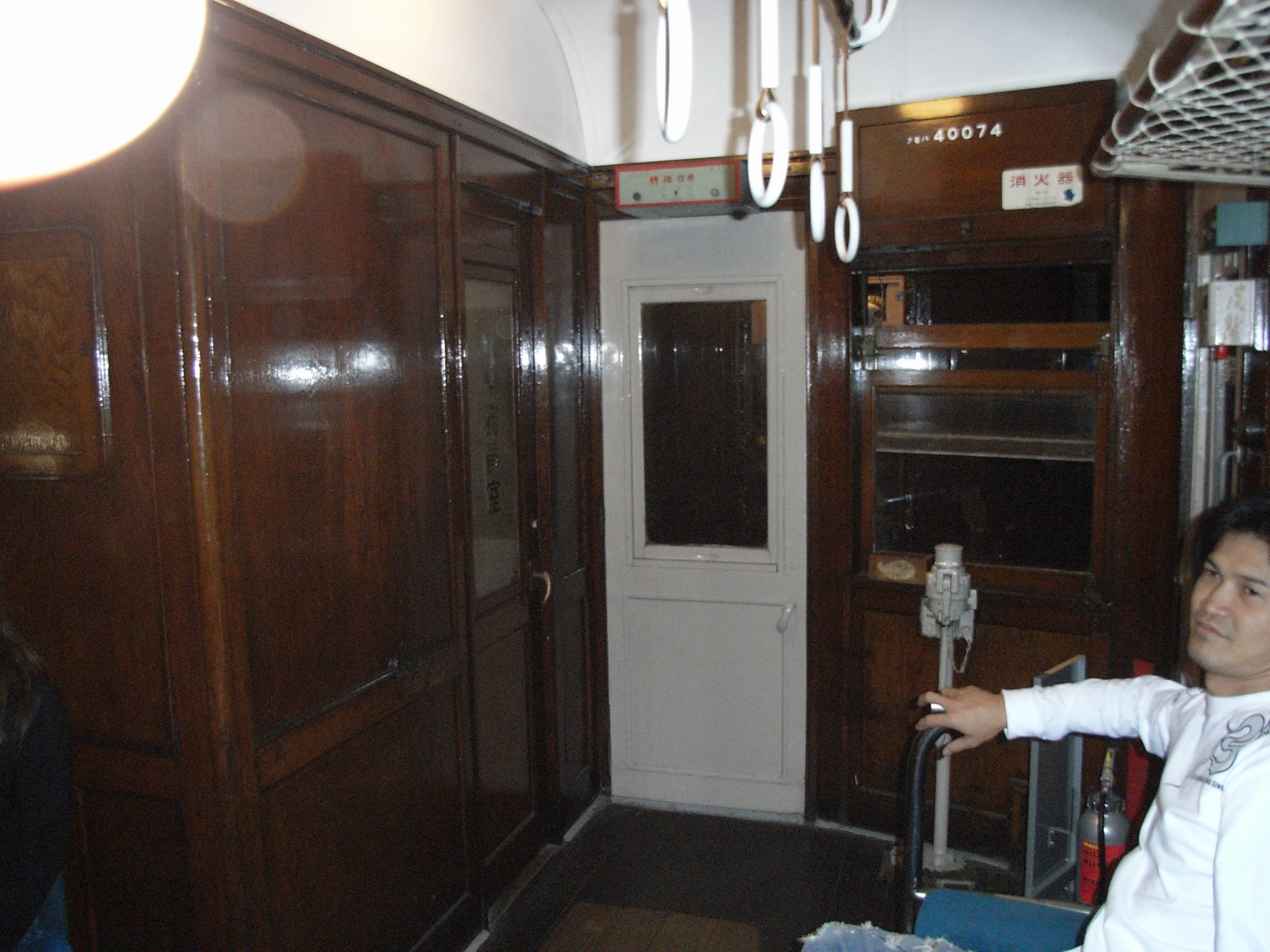 |
An interior view of the cab-end of the Moha 40 commuter EMU.
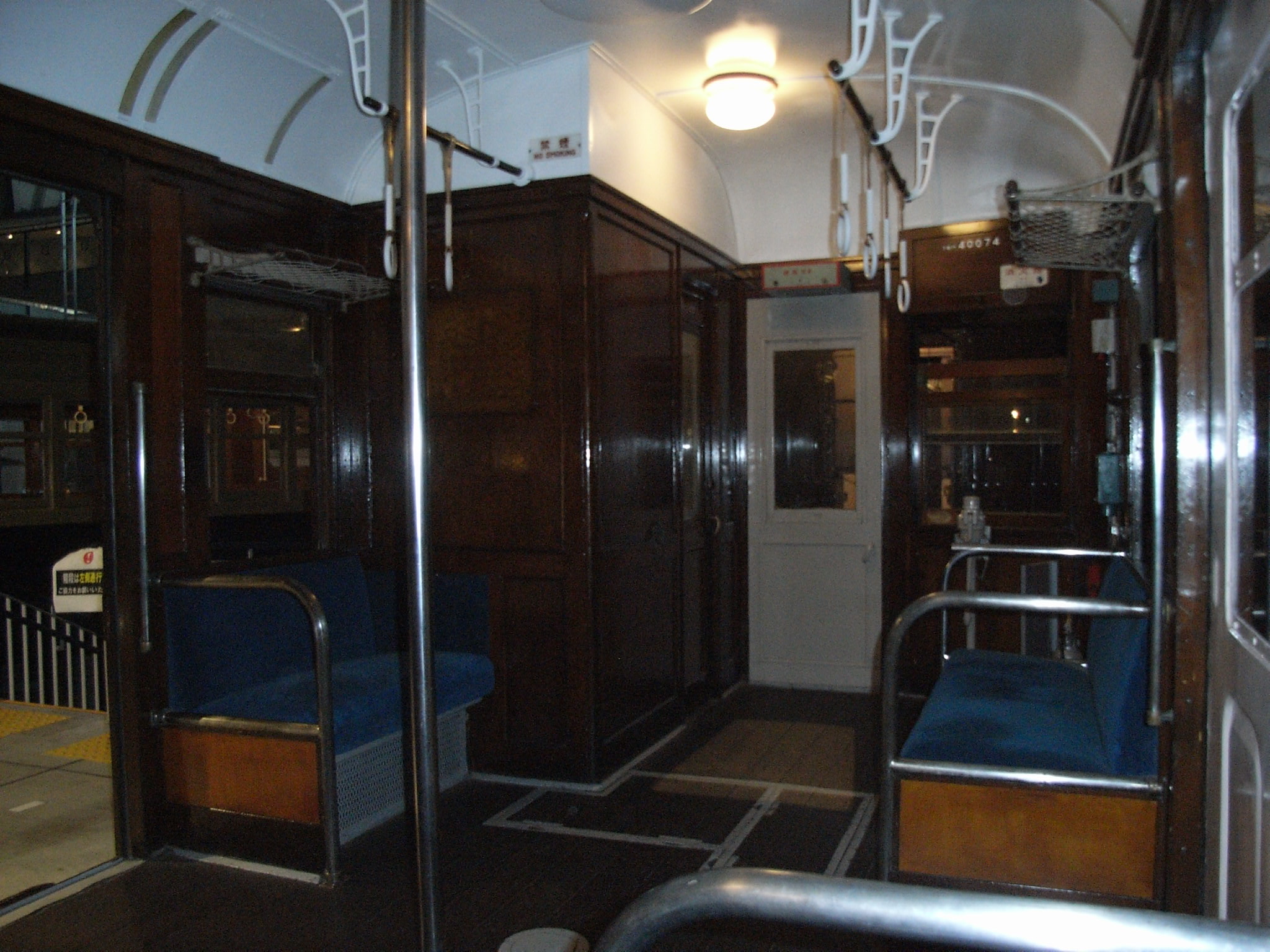 |
The cab interior of DMU #41307.
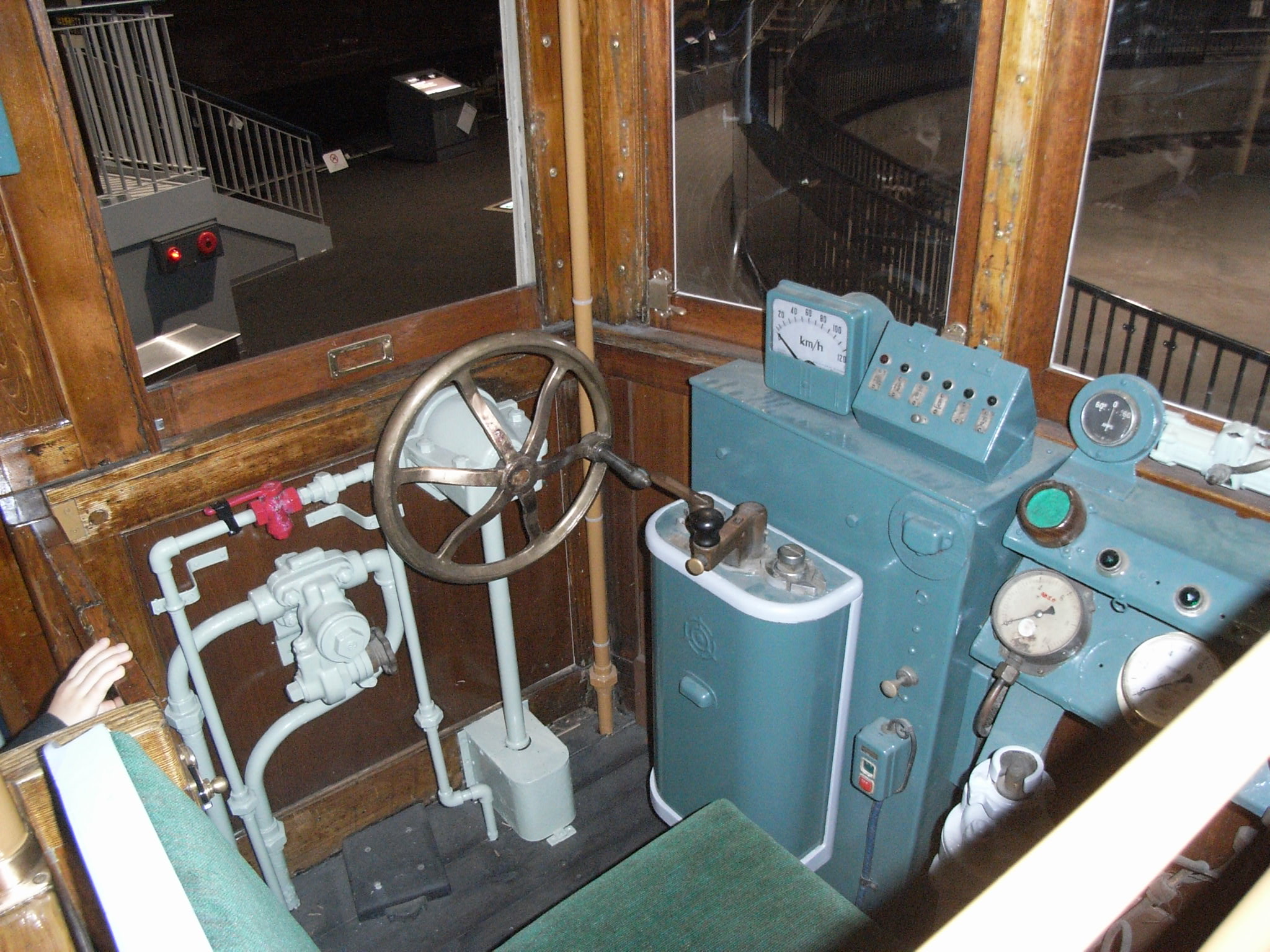 |
The interior of the passenger cabin of DMU #41307.
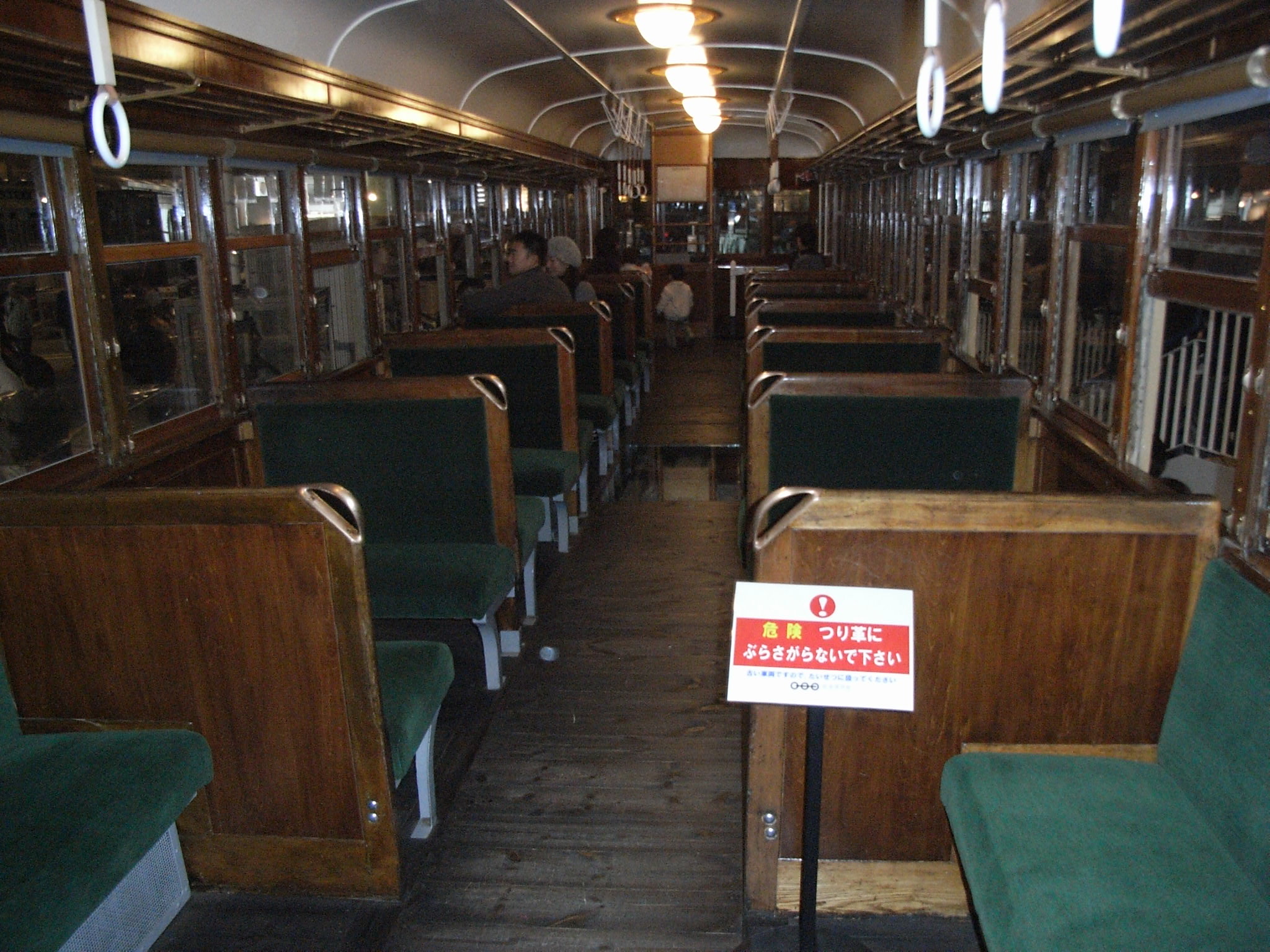 |
Another exterior view of DMU #41307.
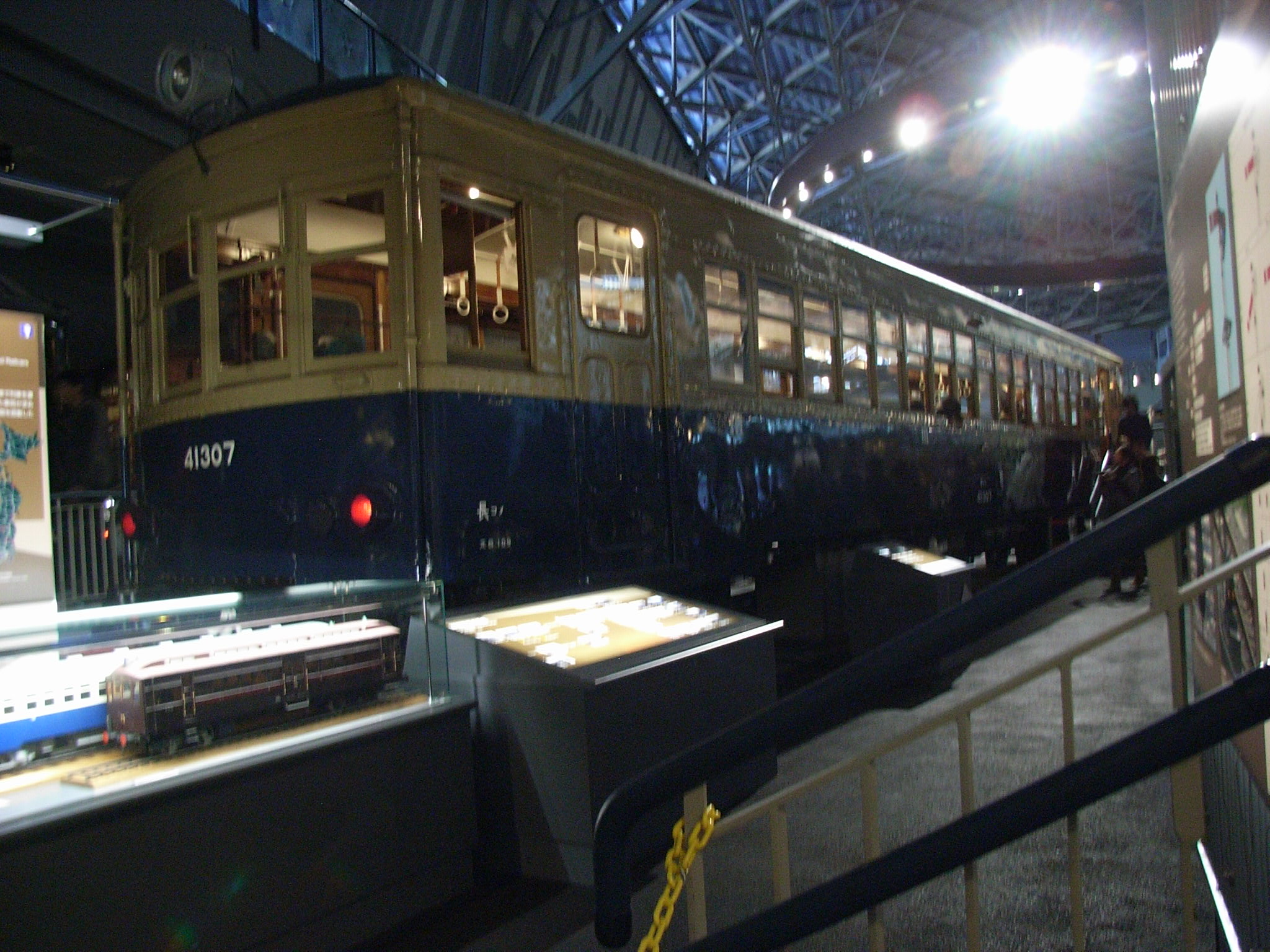 |
A cut model of steam locomotive D51, 2-8-2, exhibited outside
the
museum entrance.
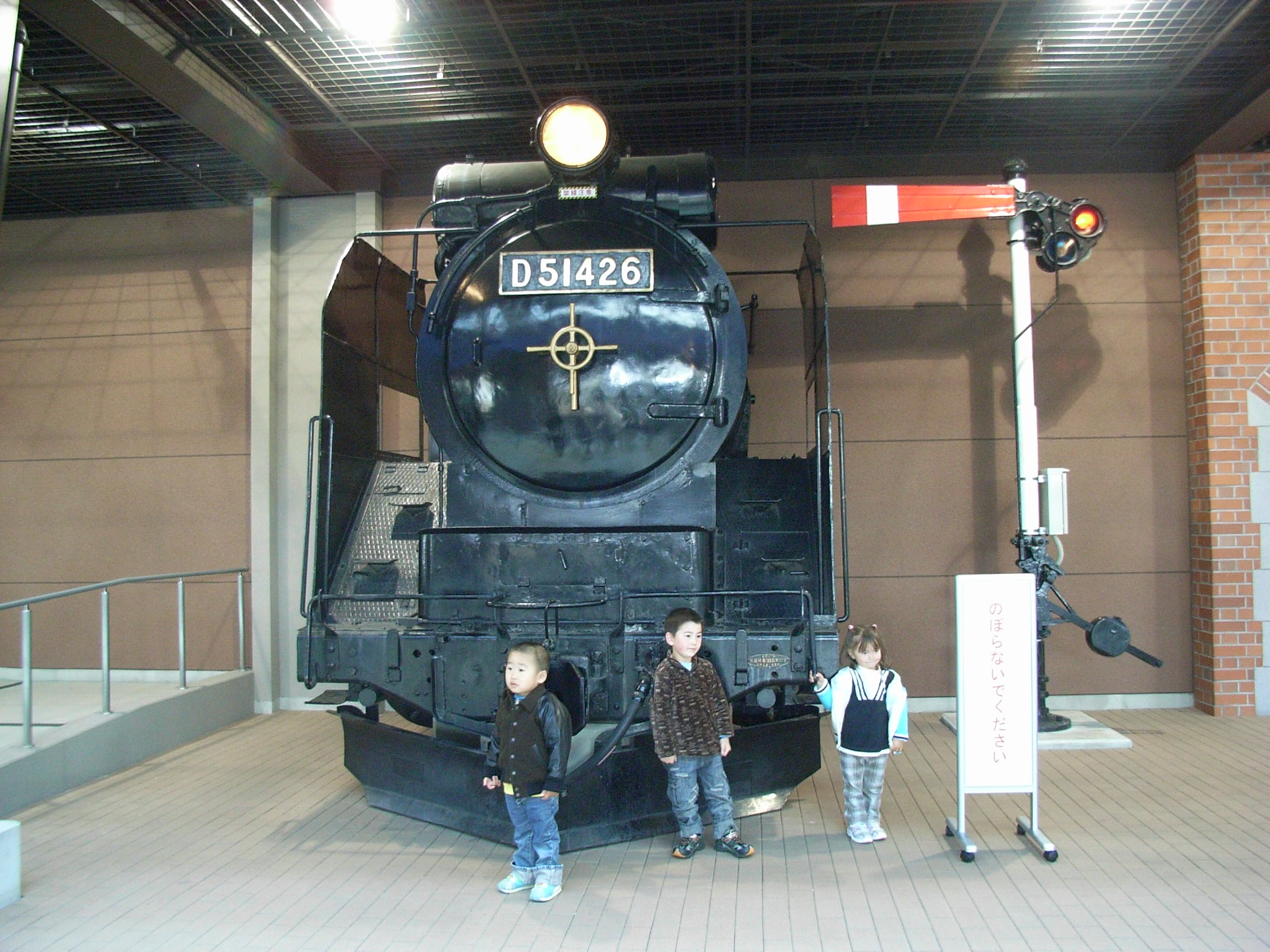 |
|
|
